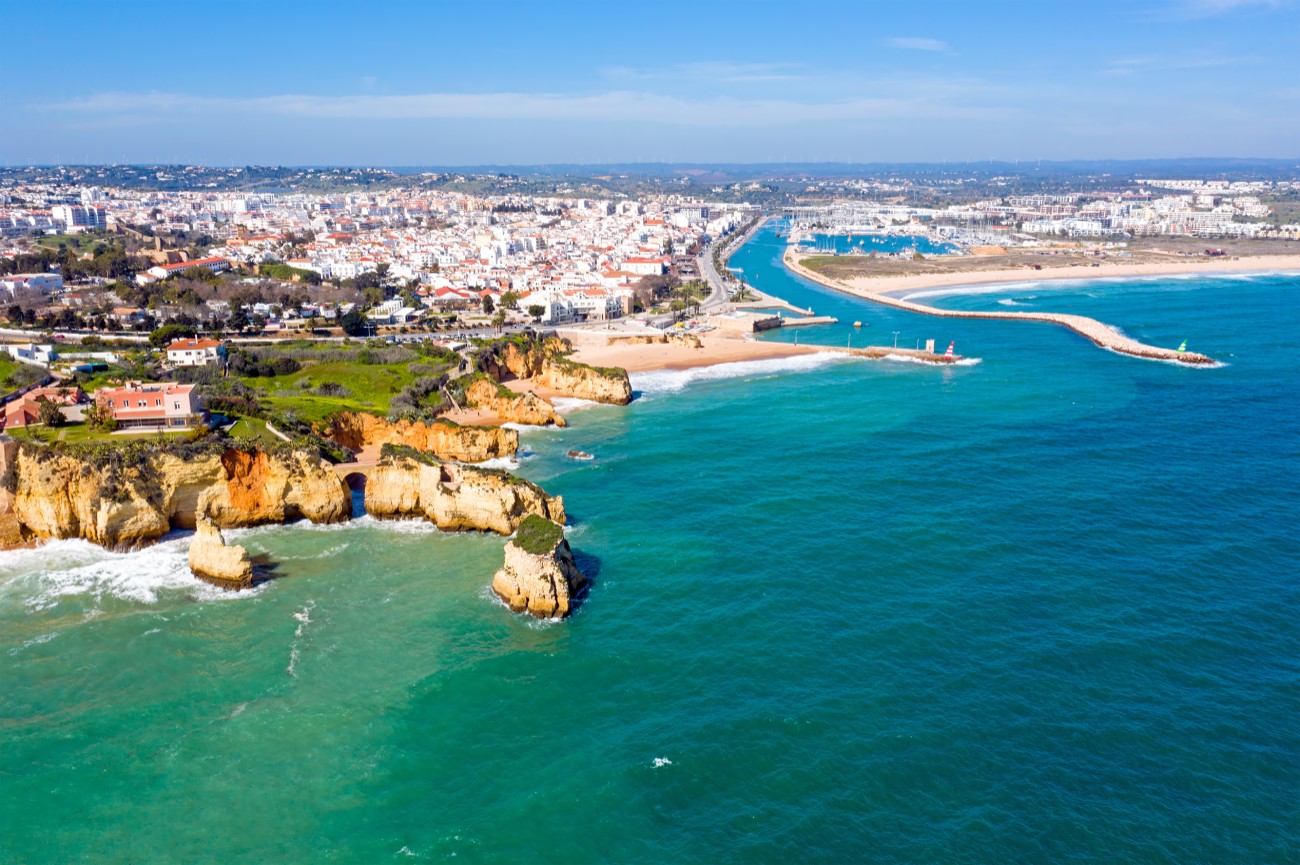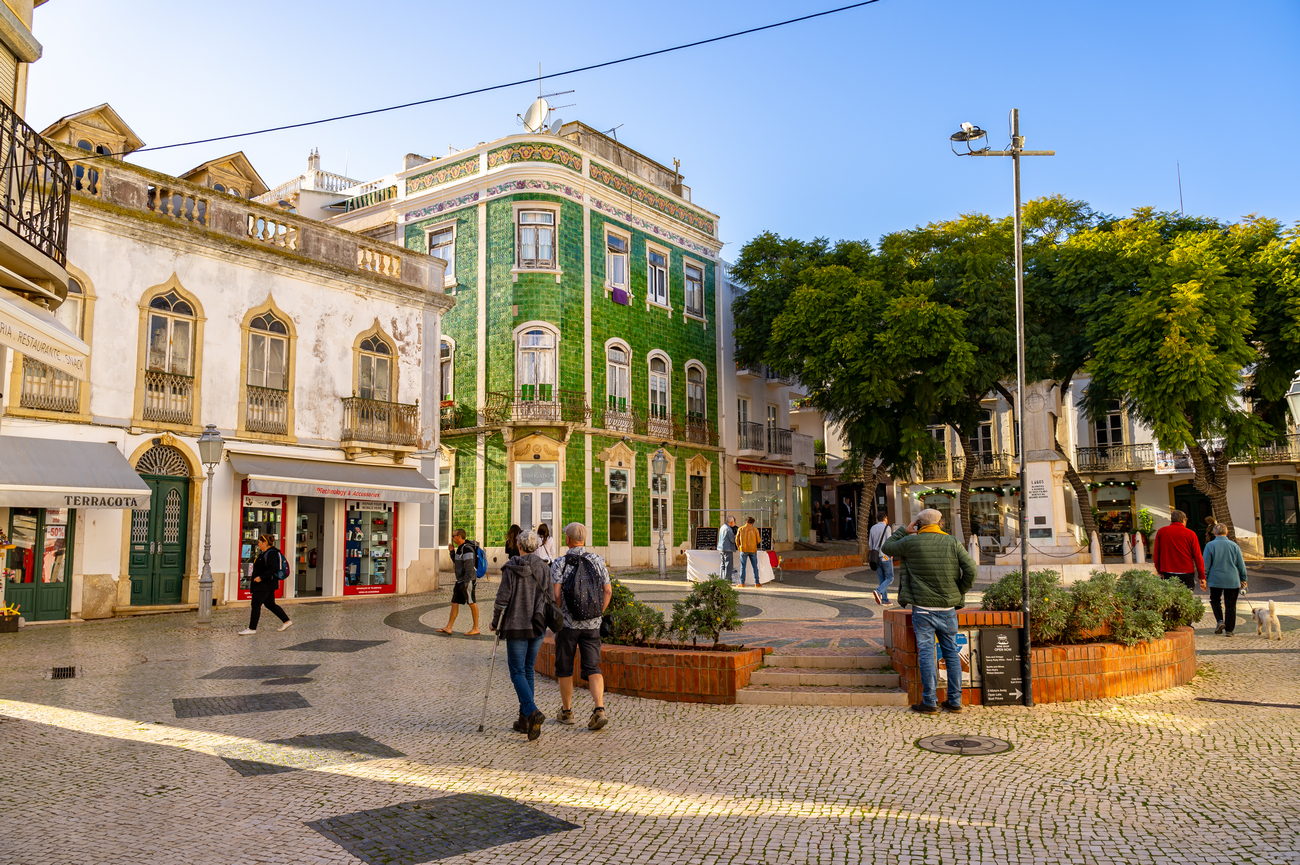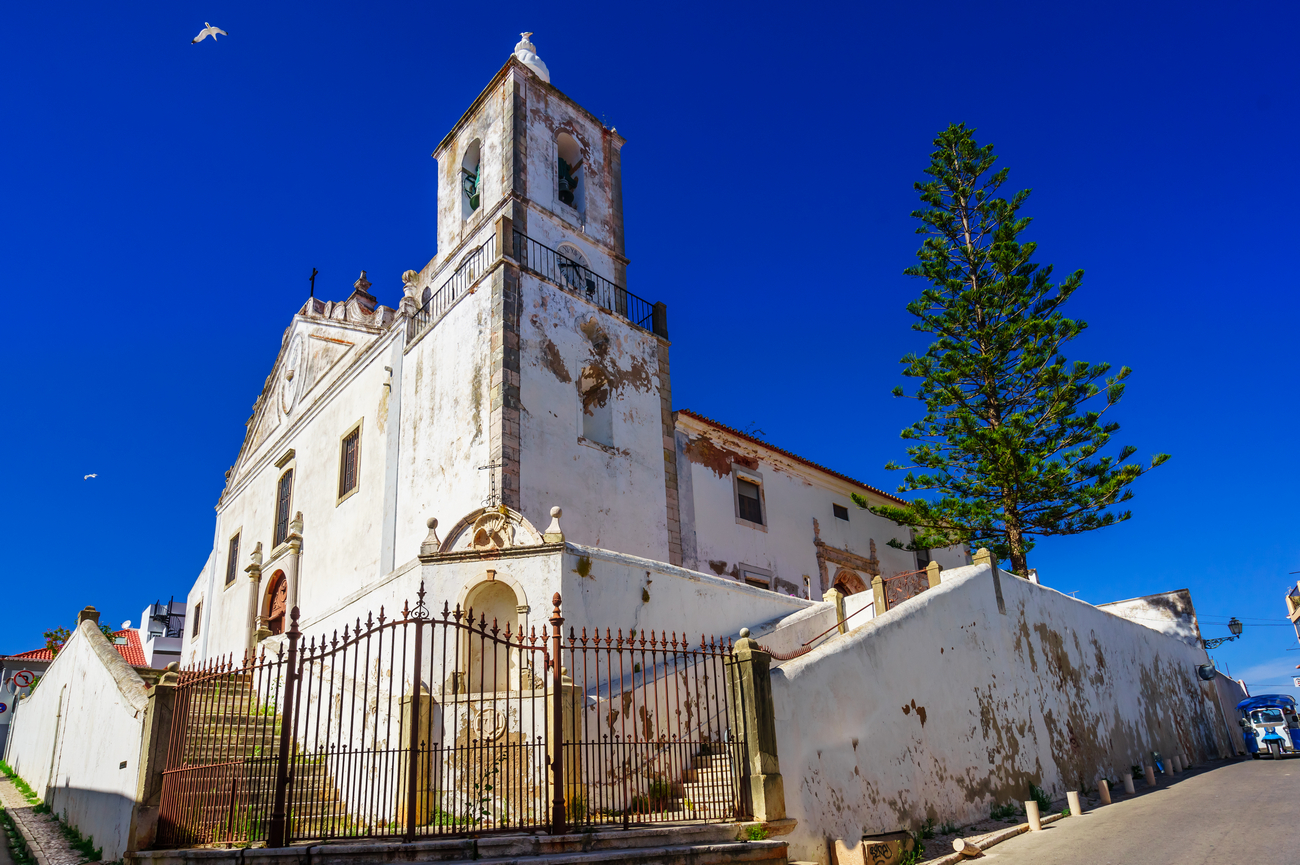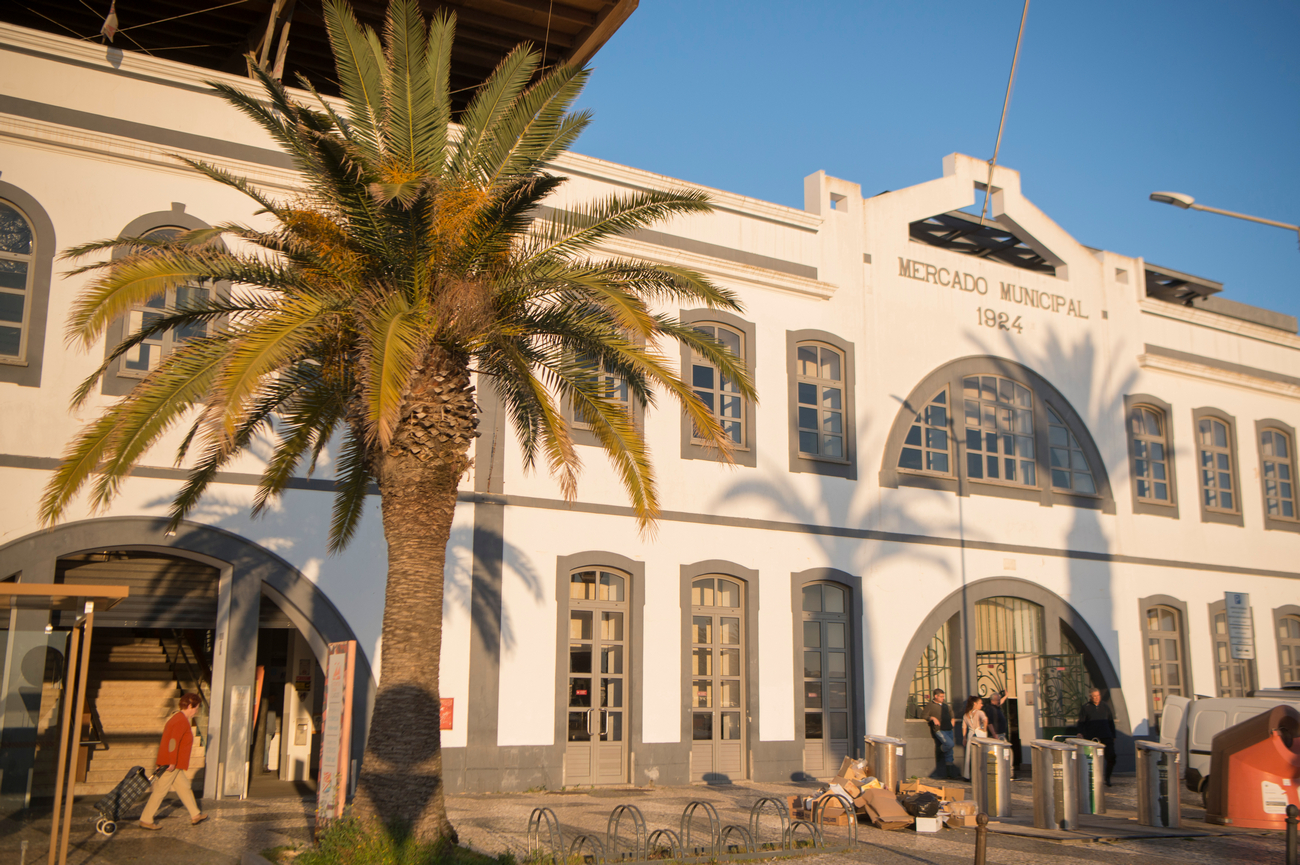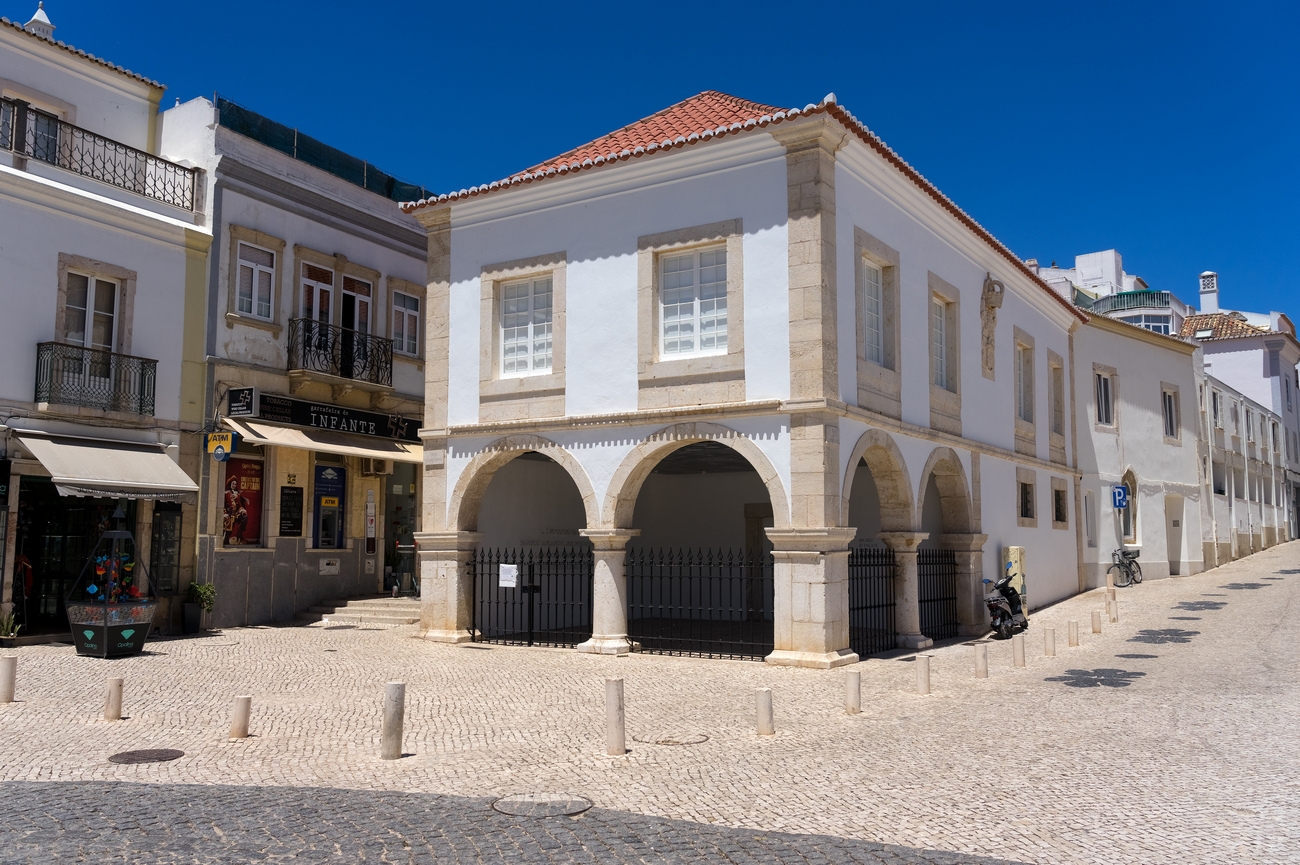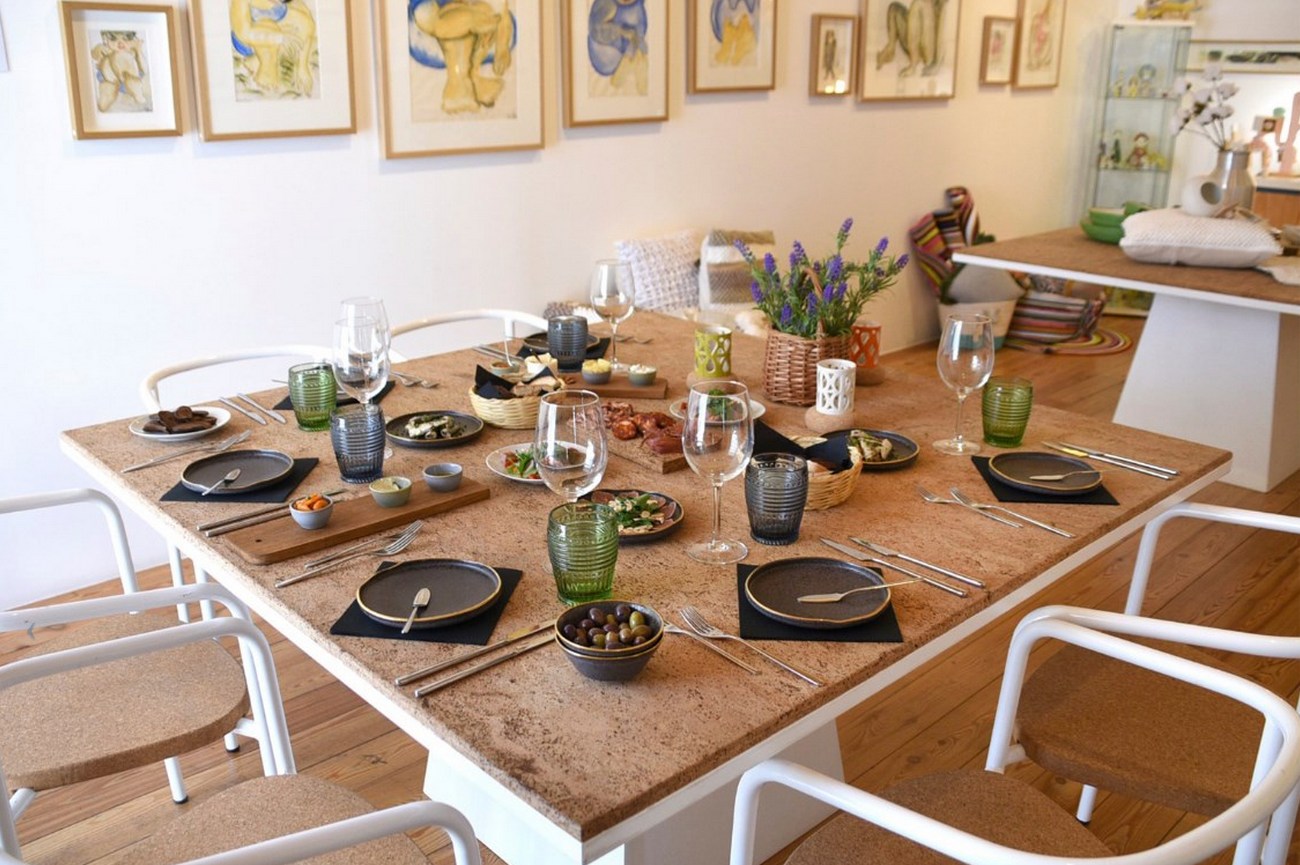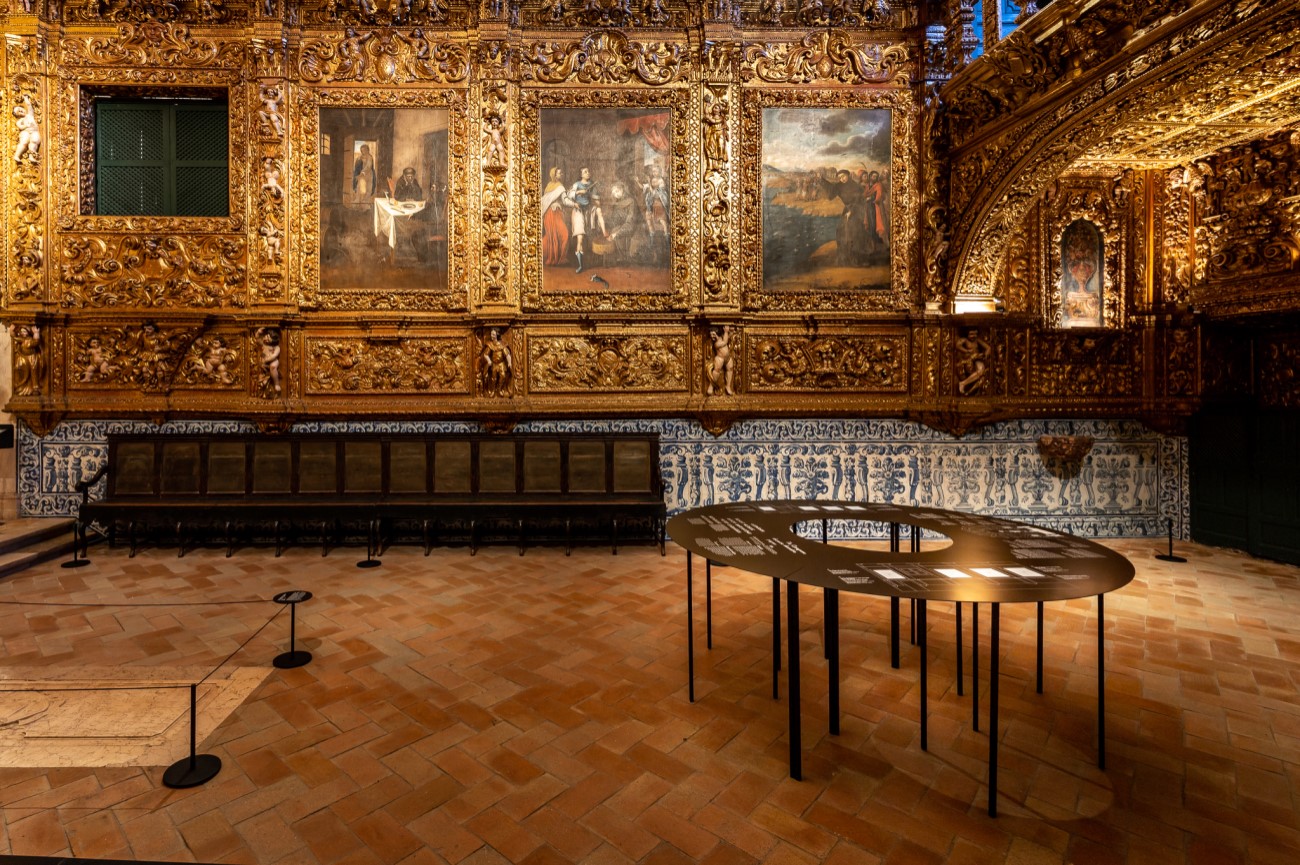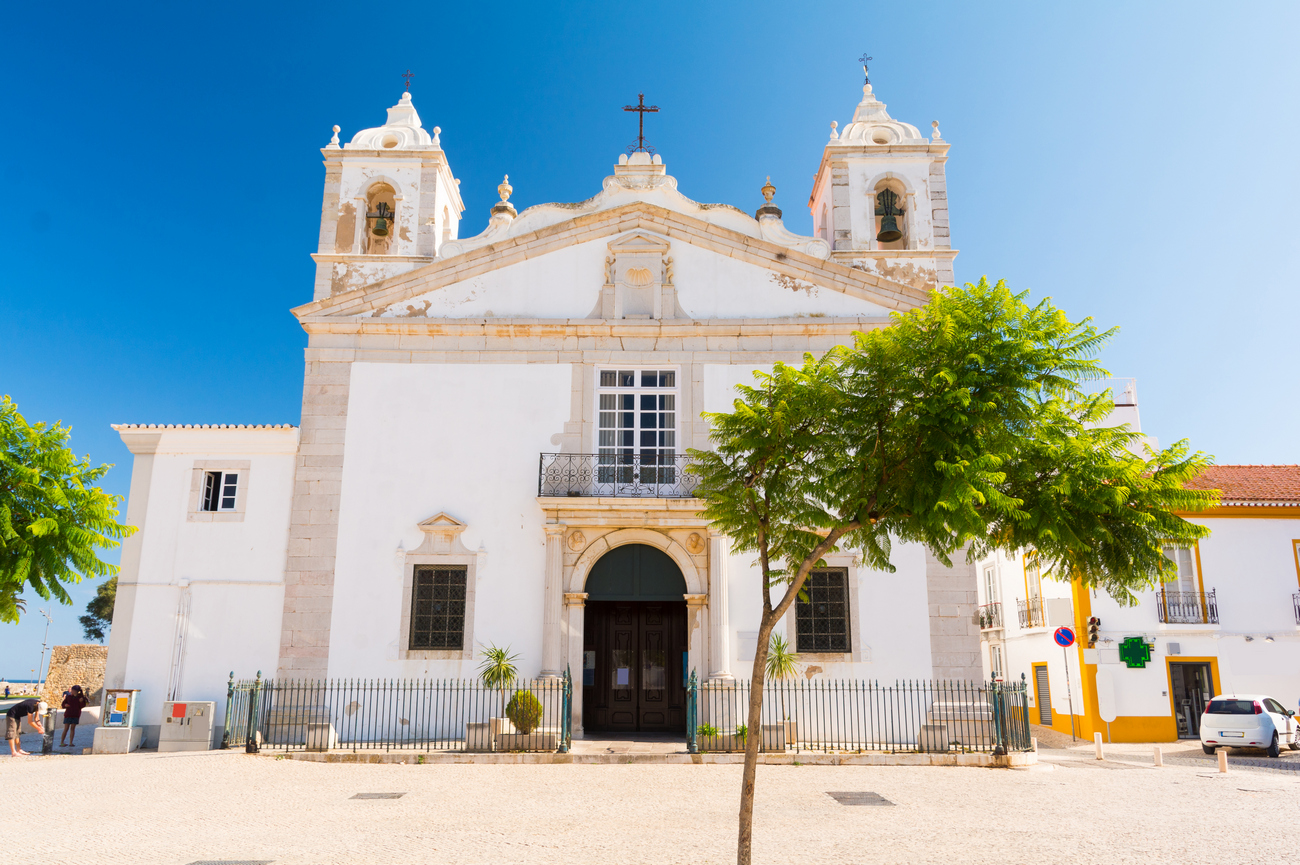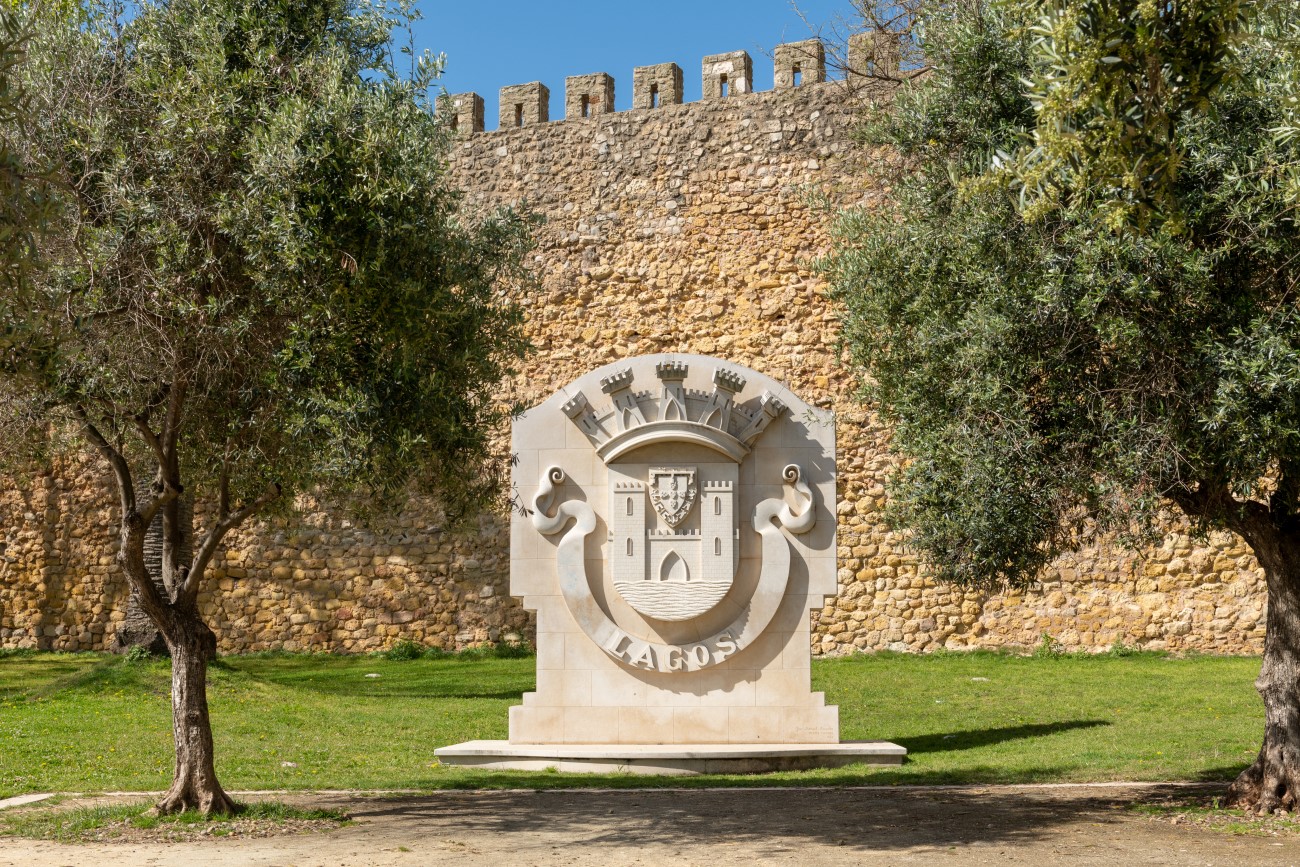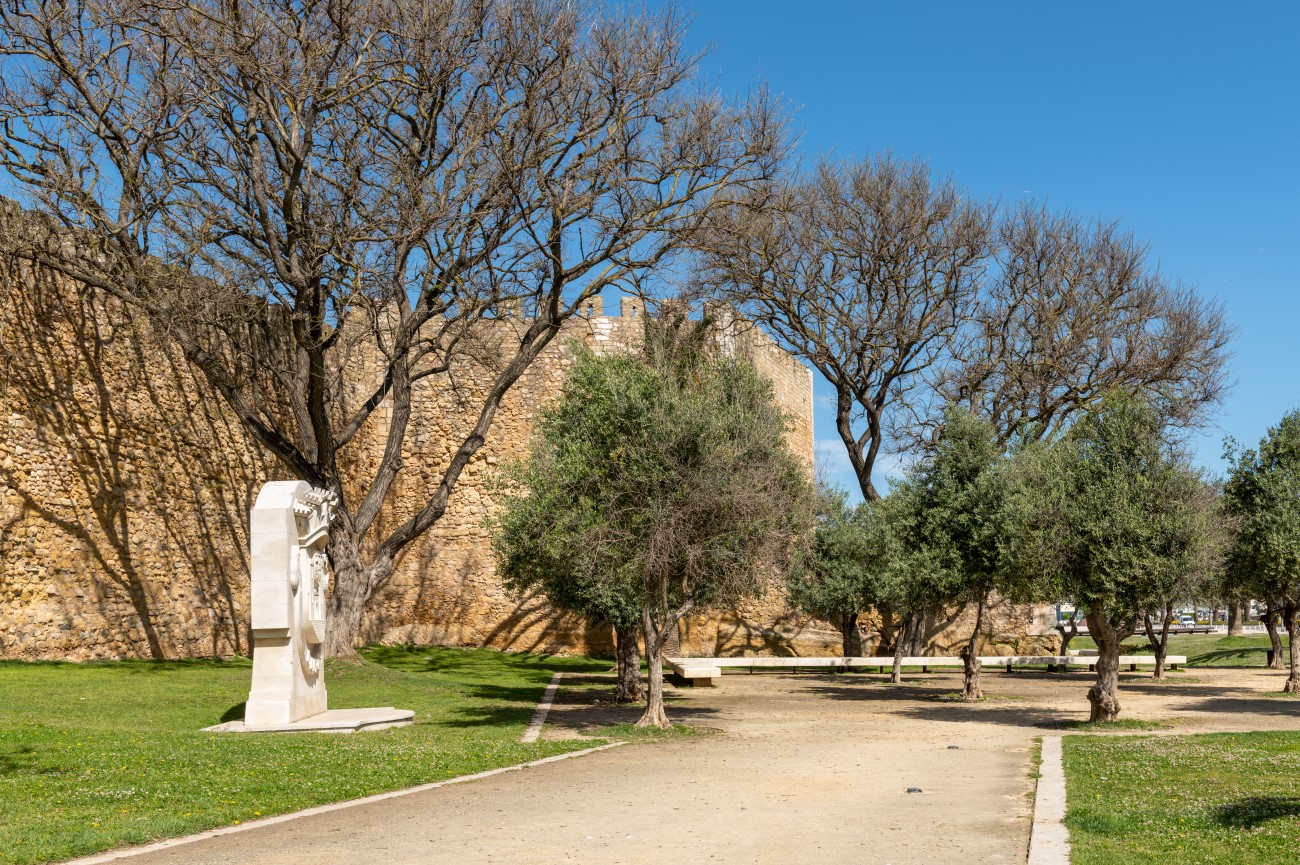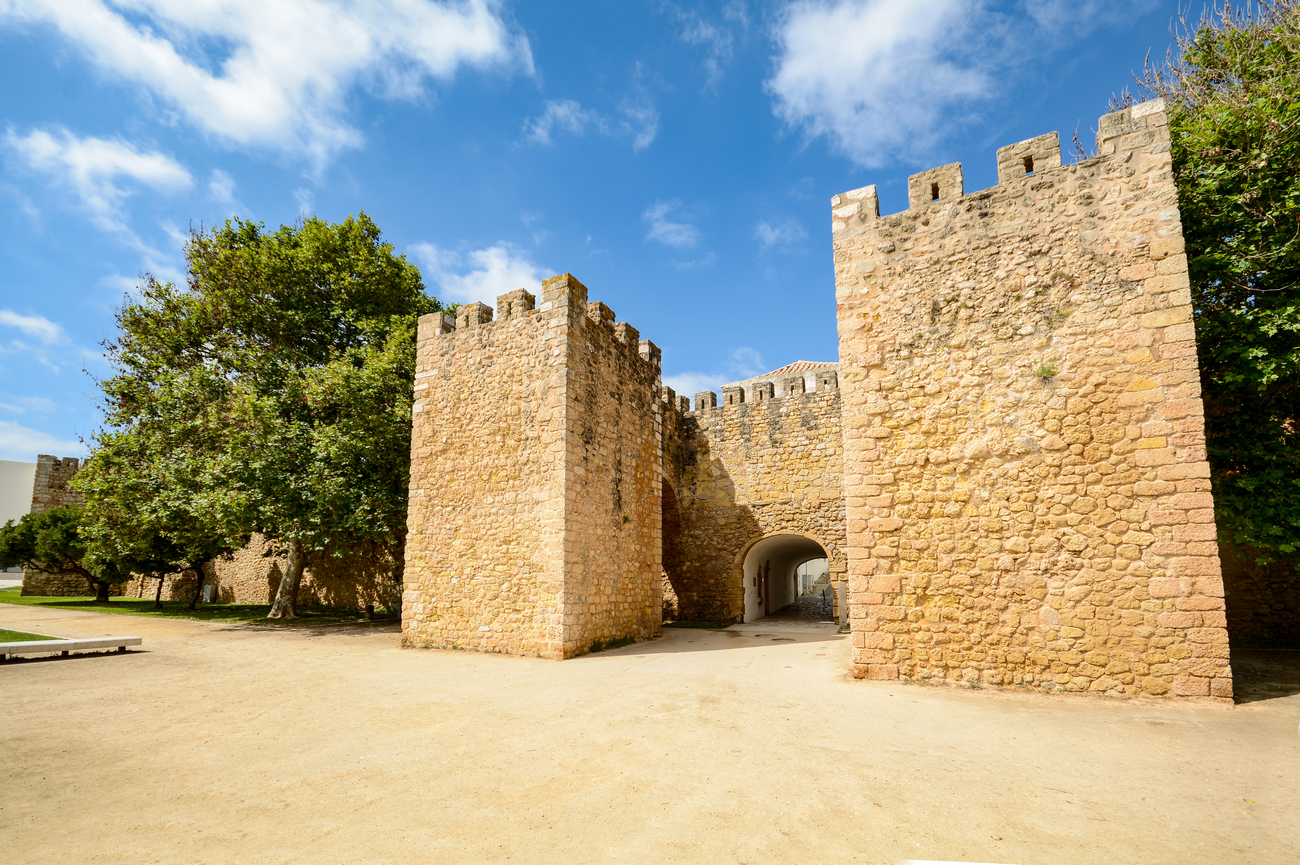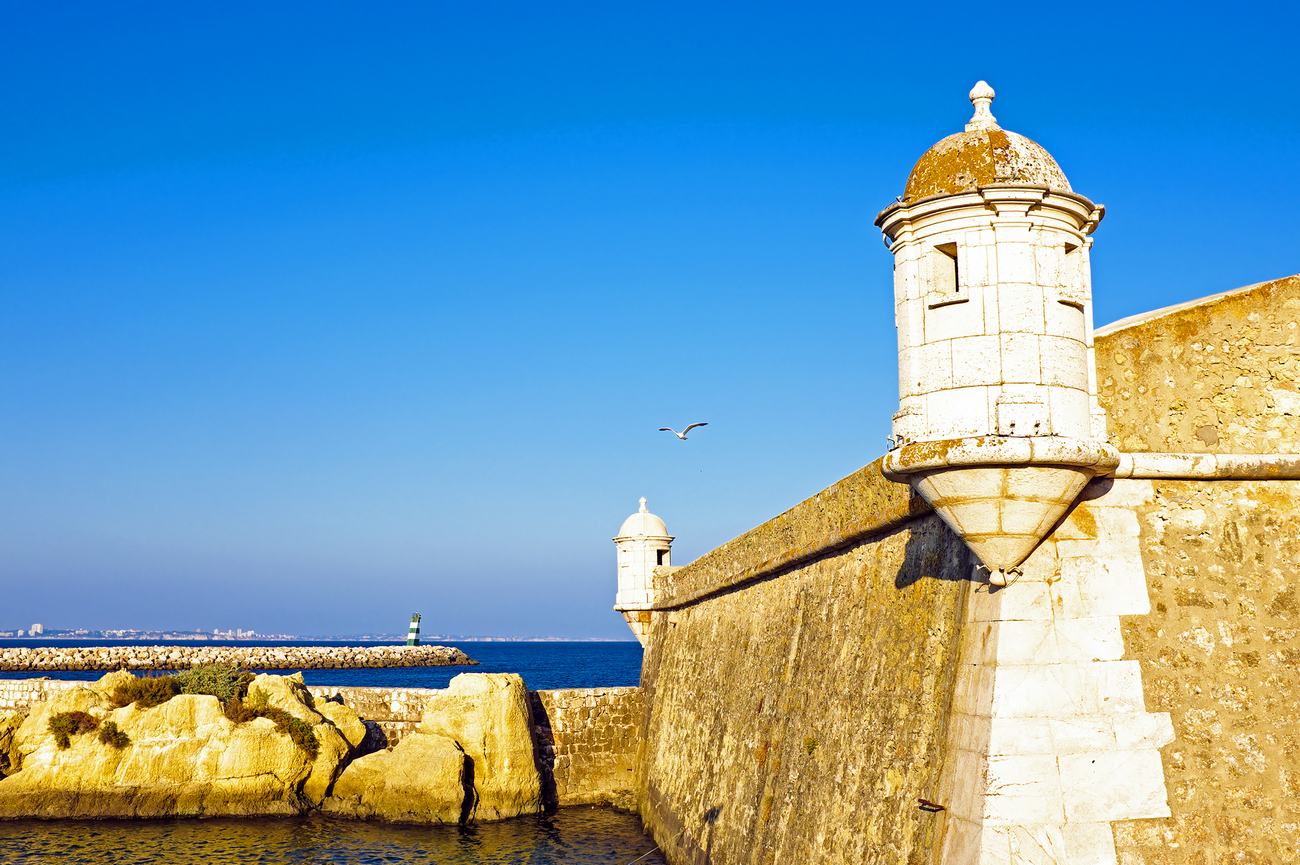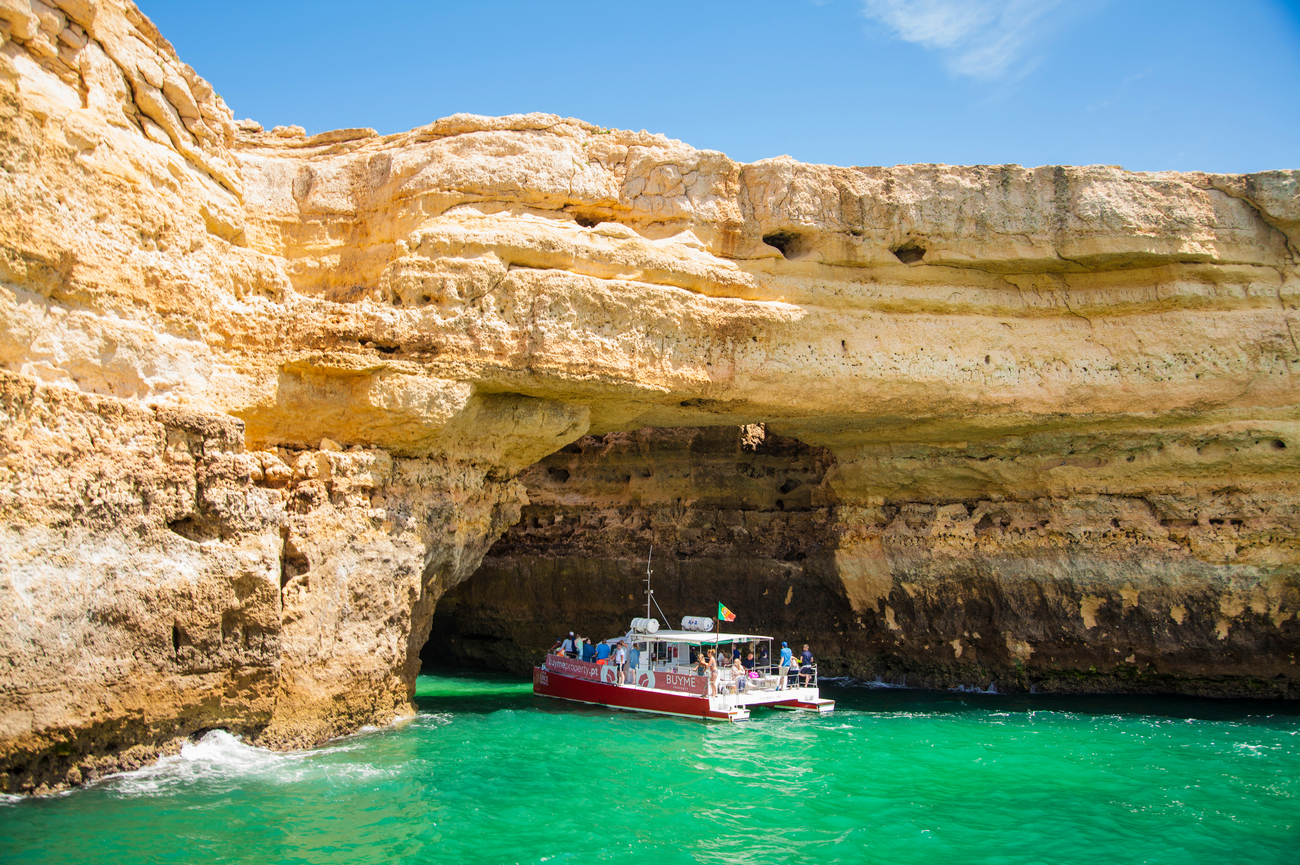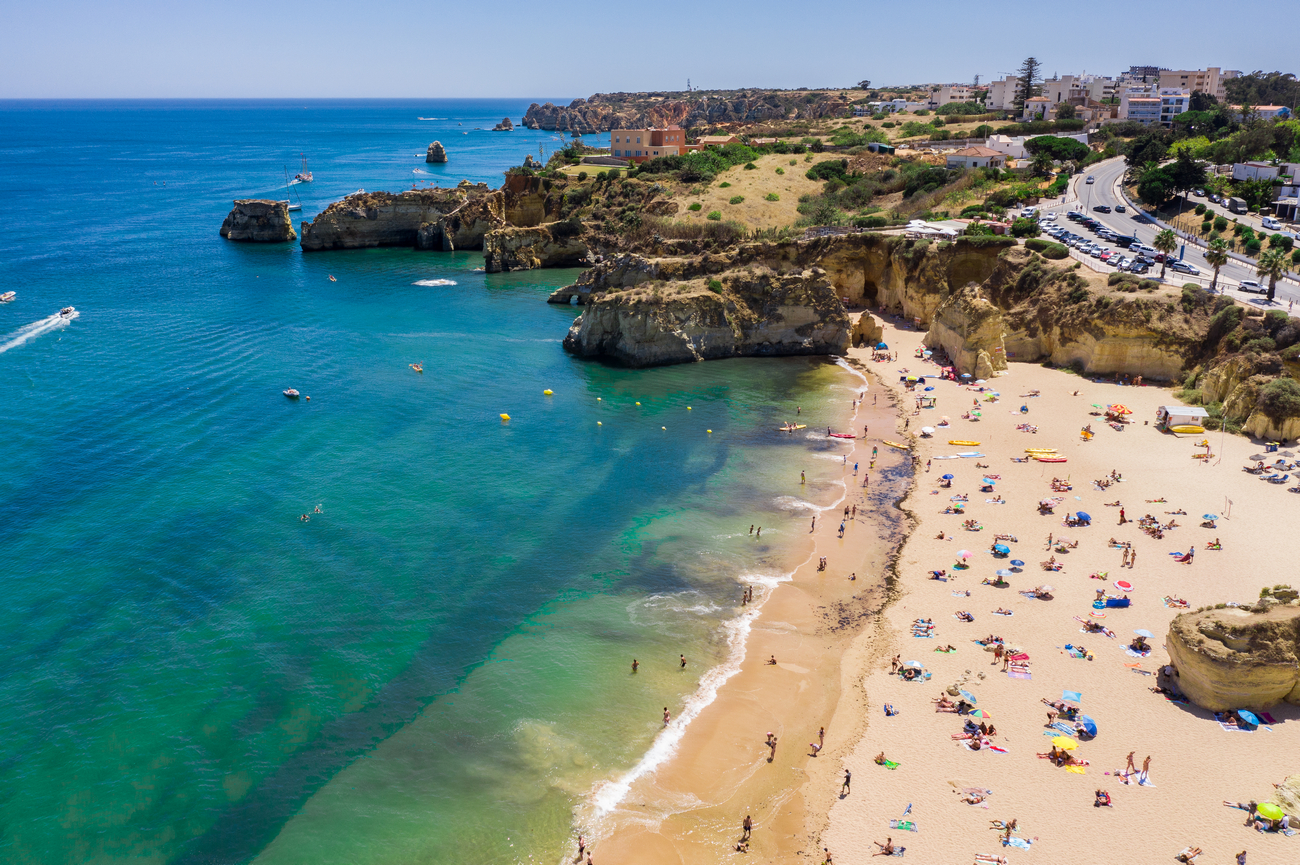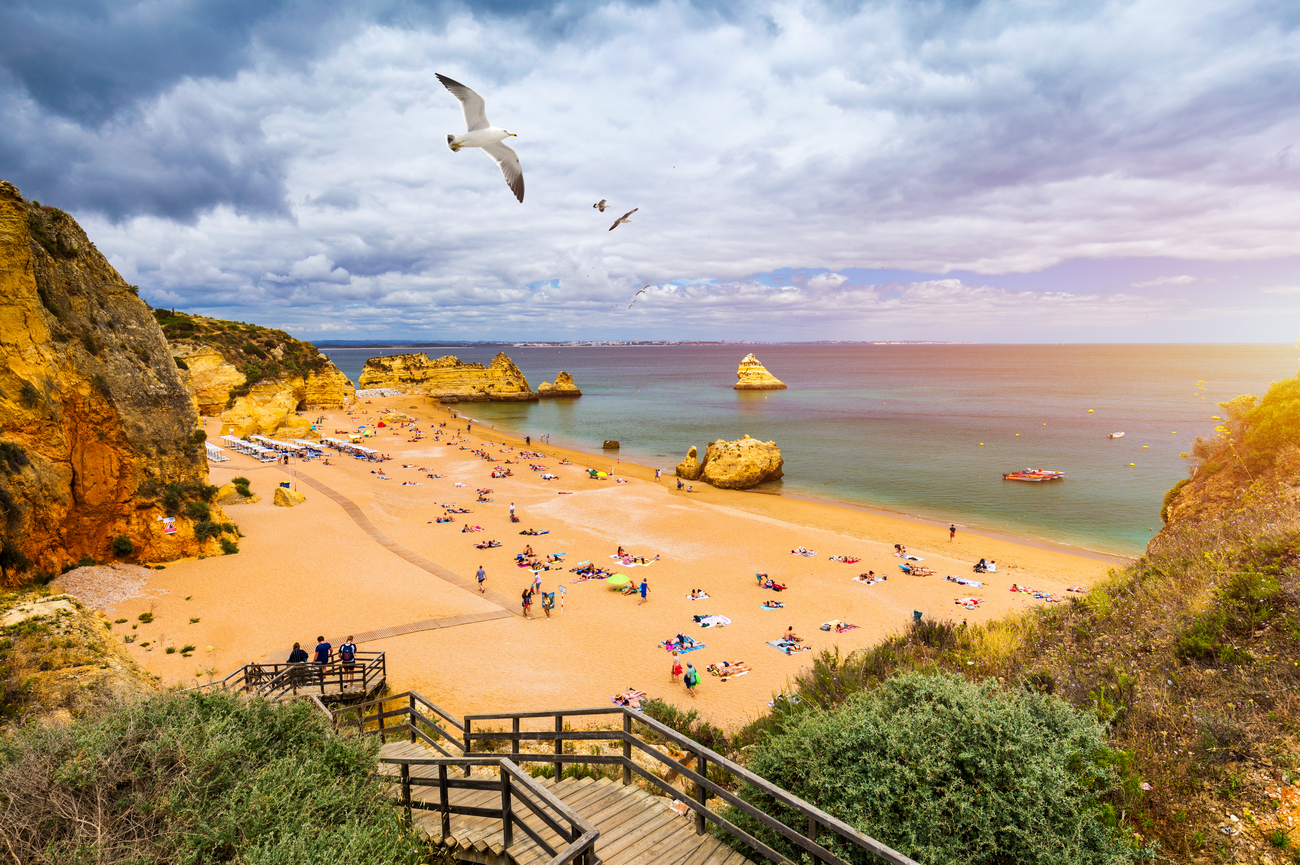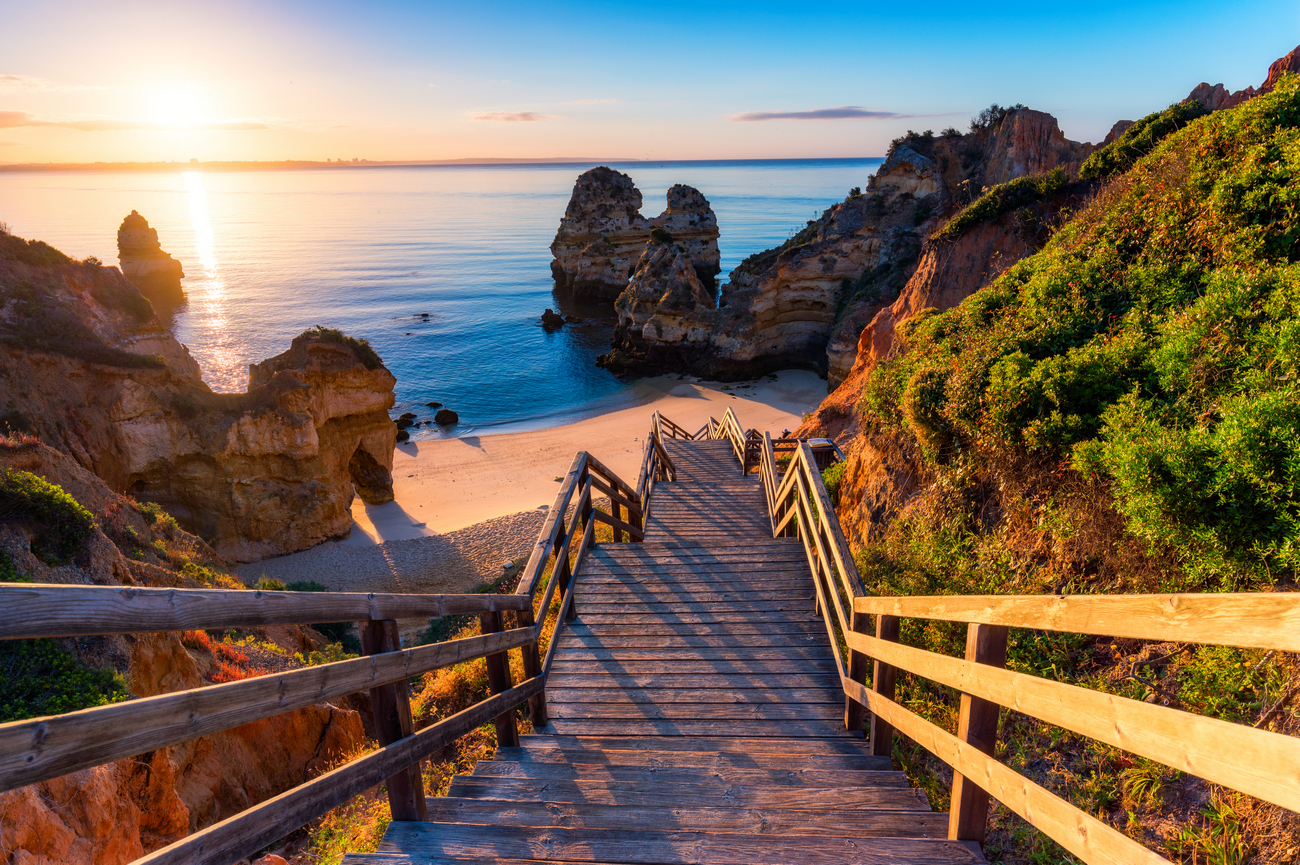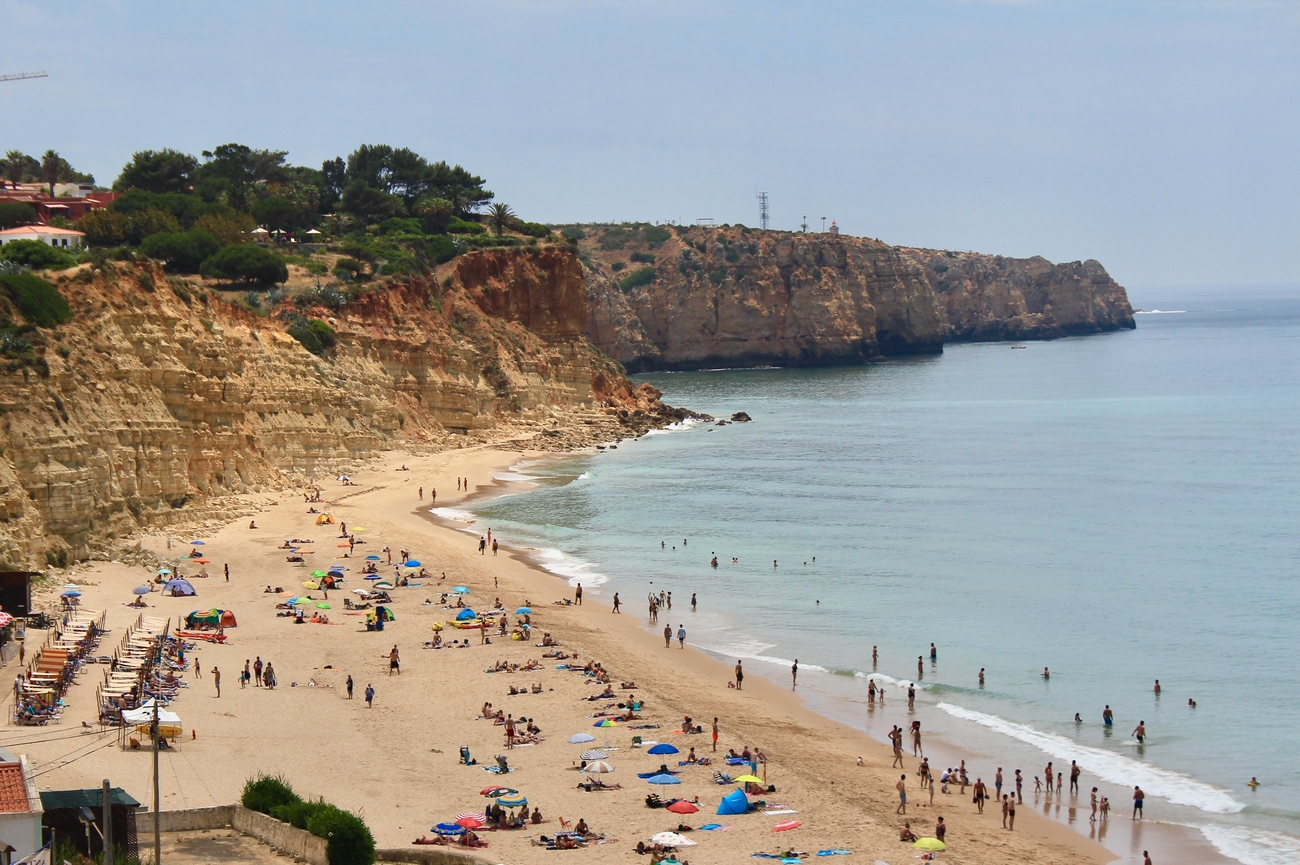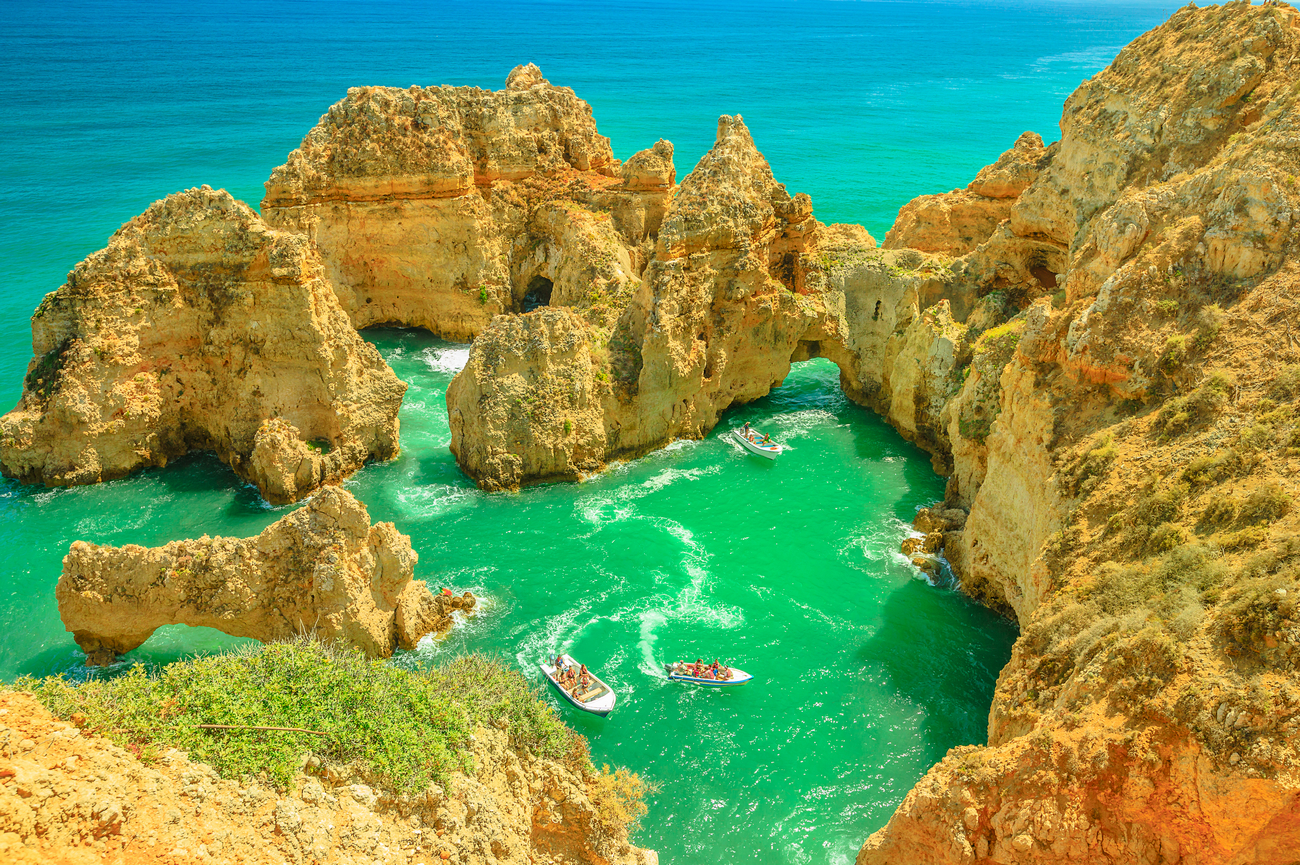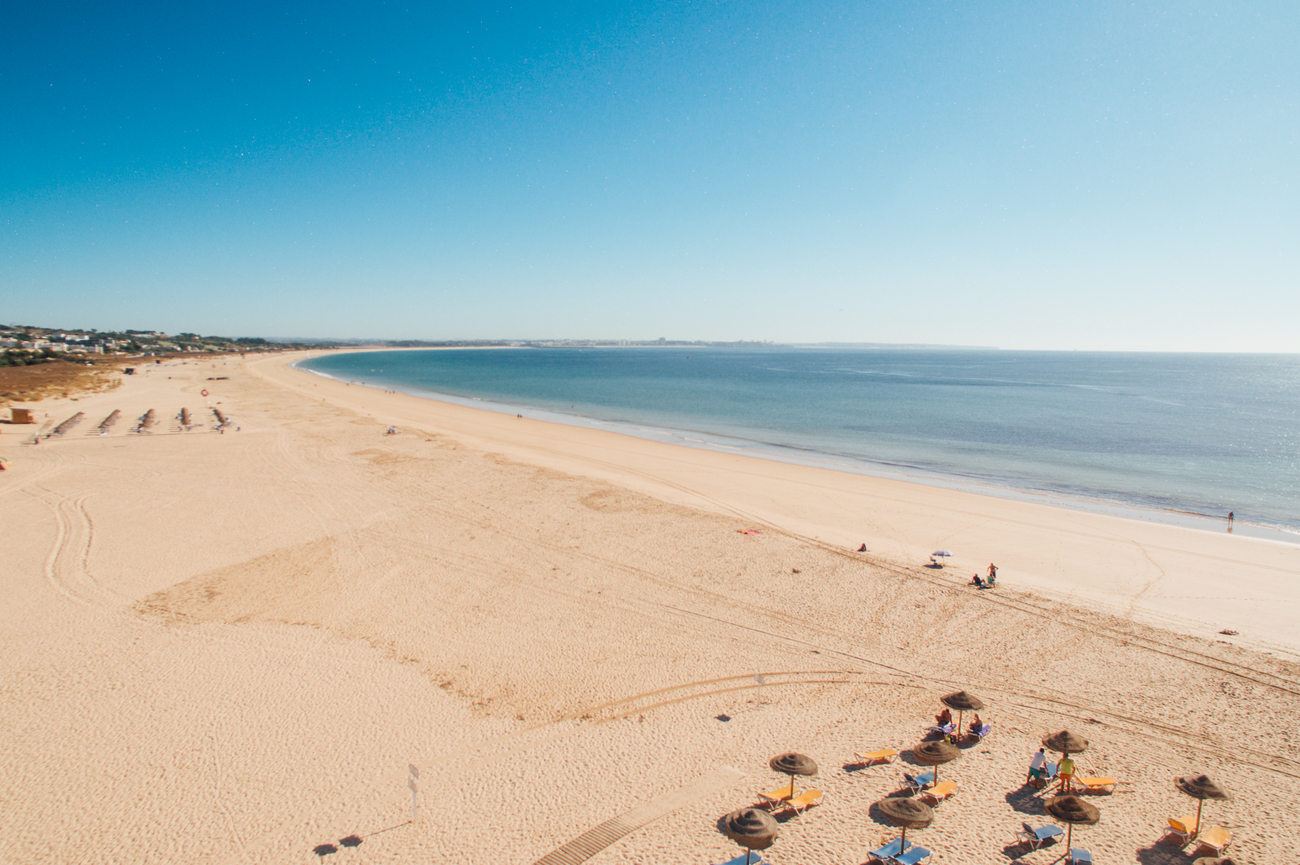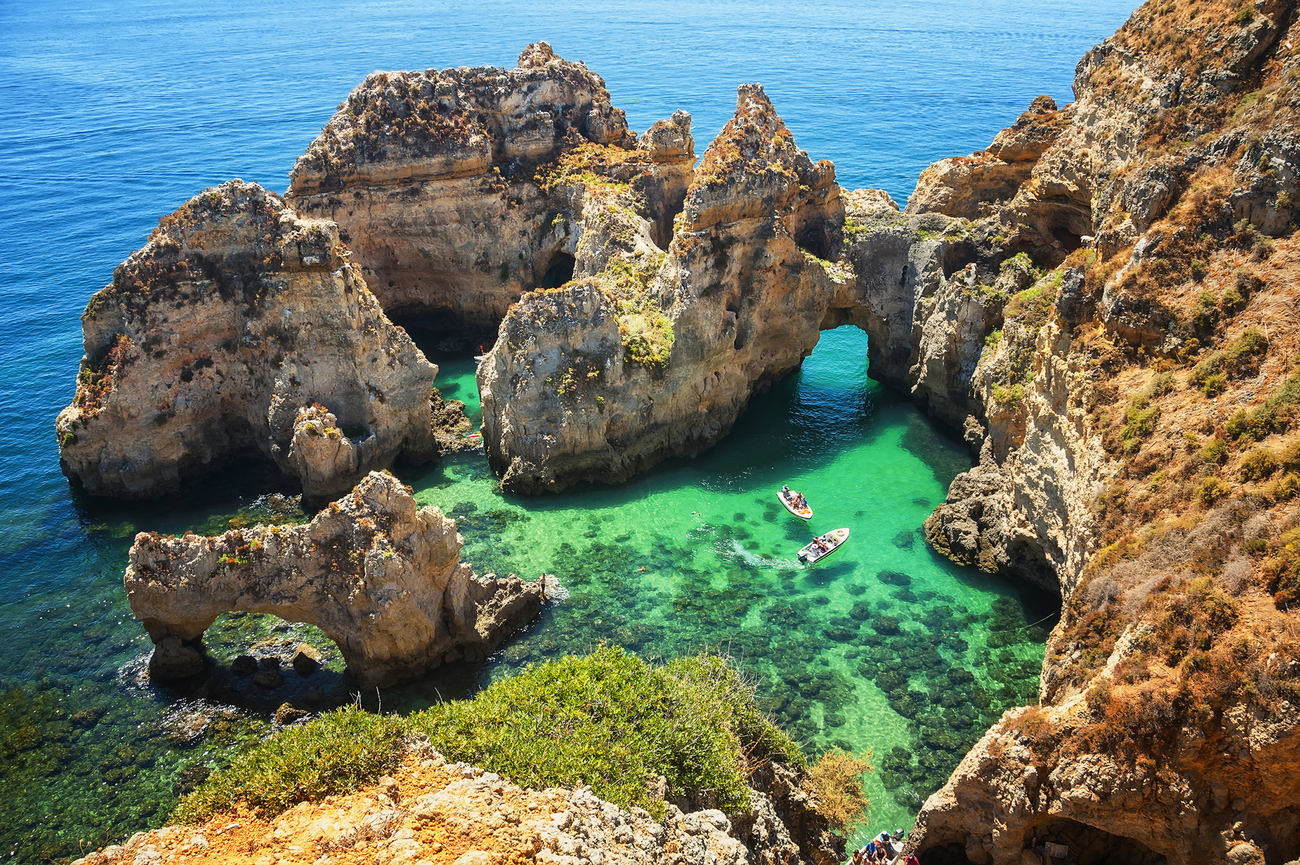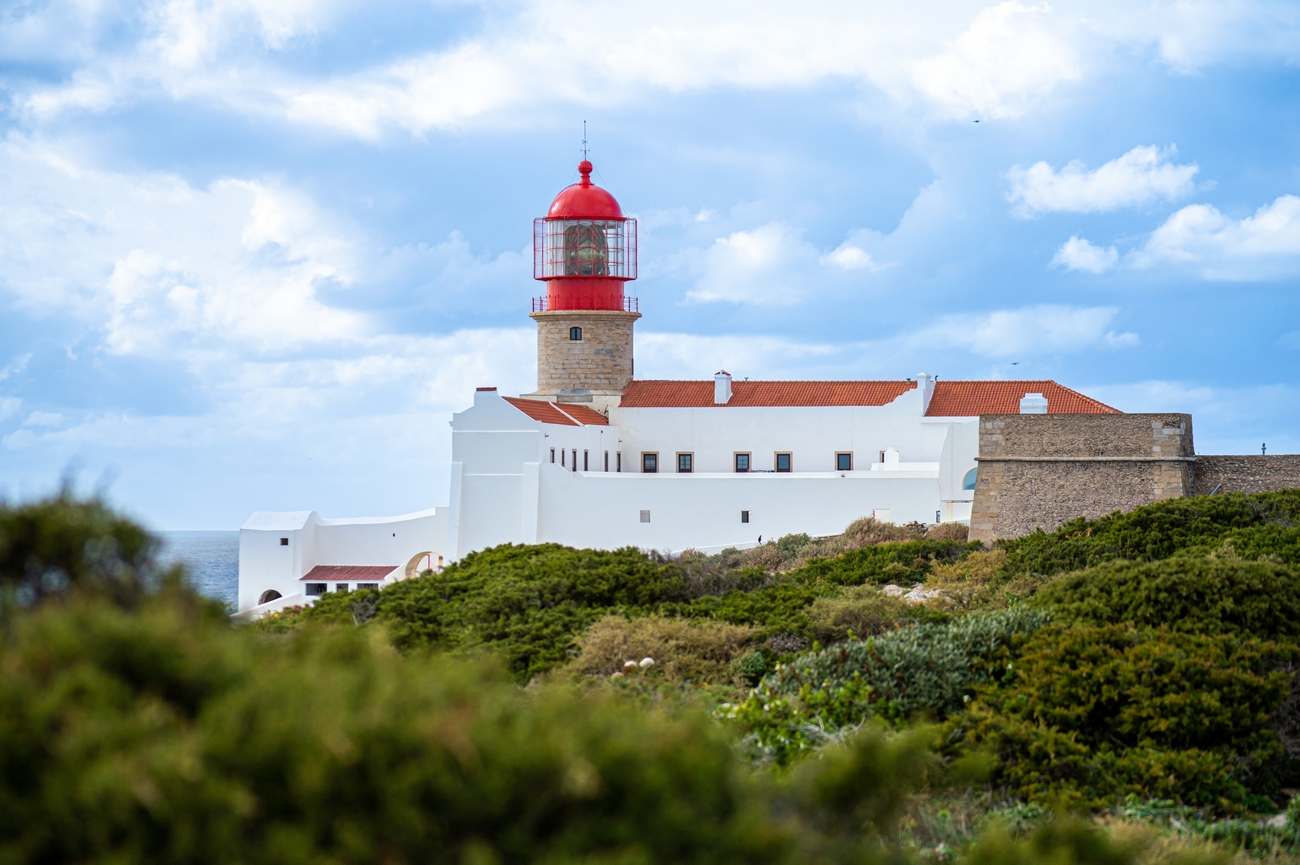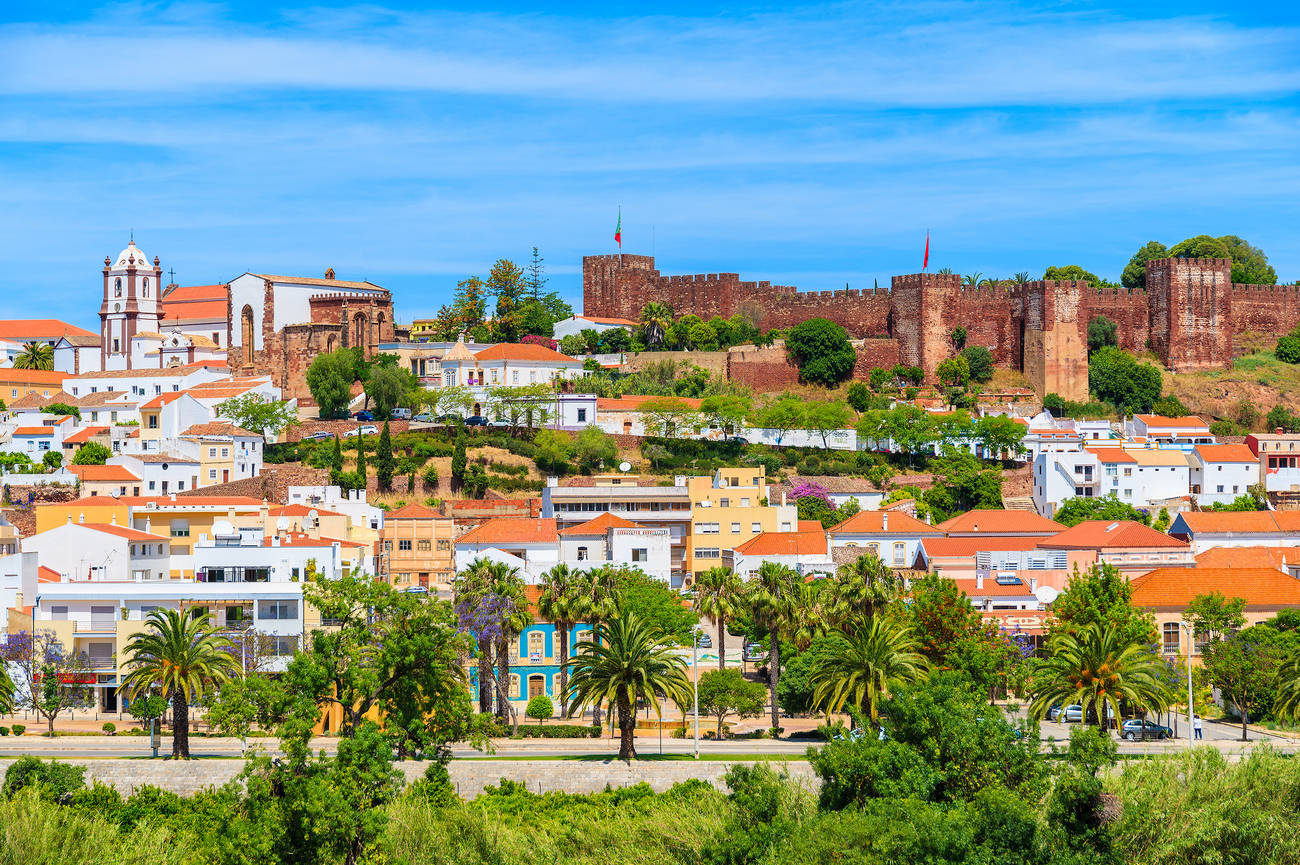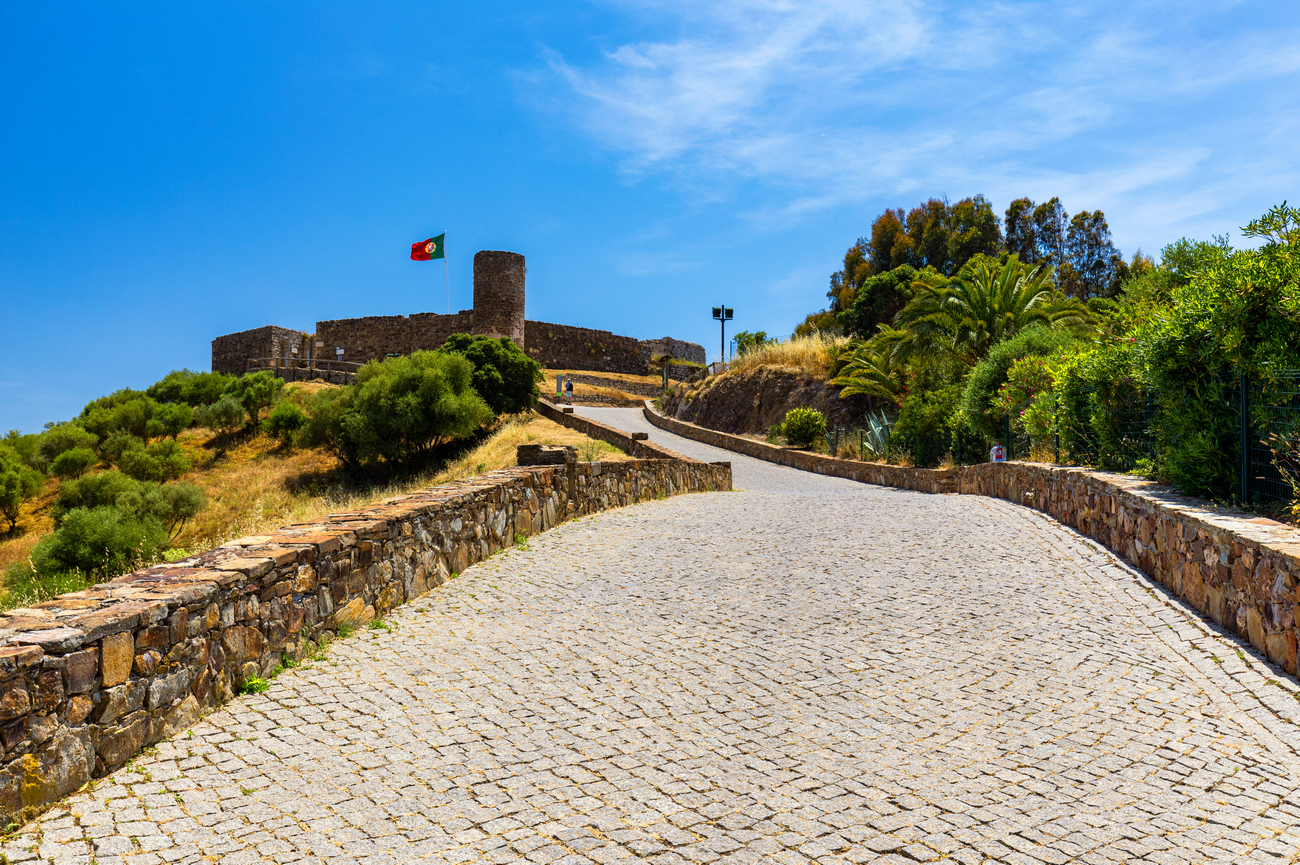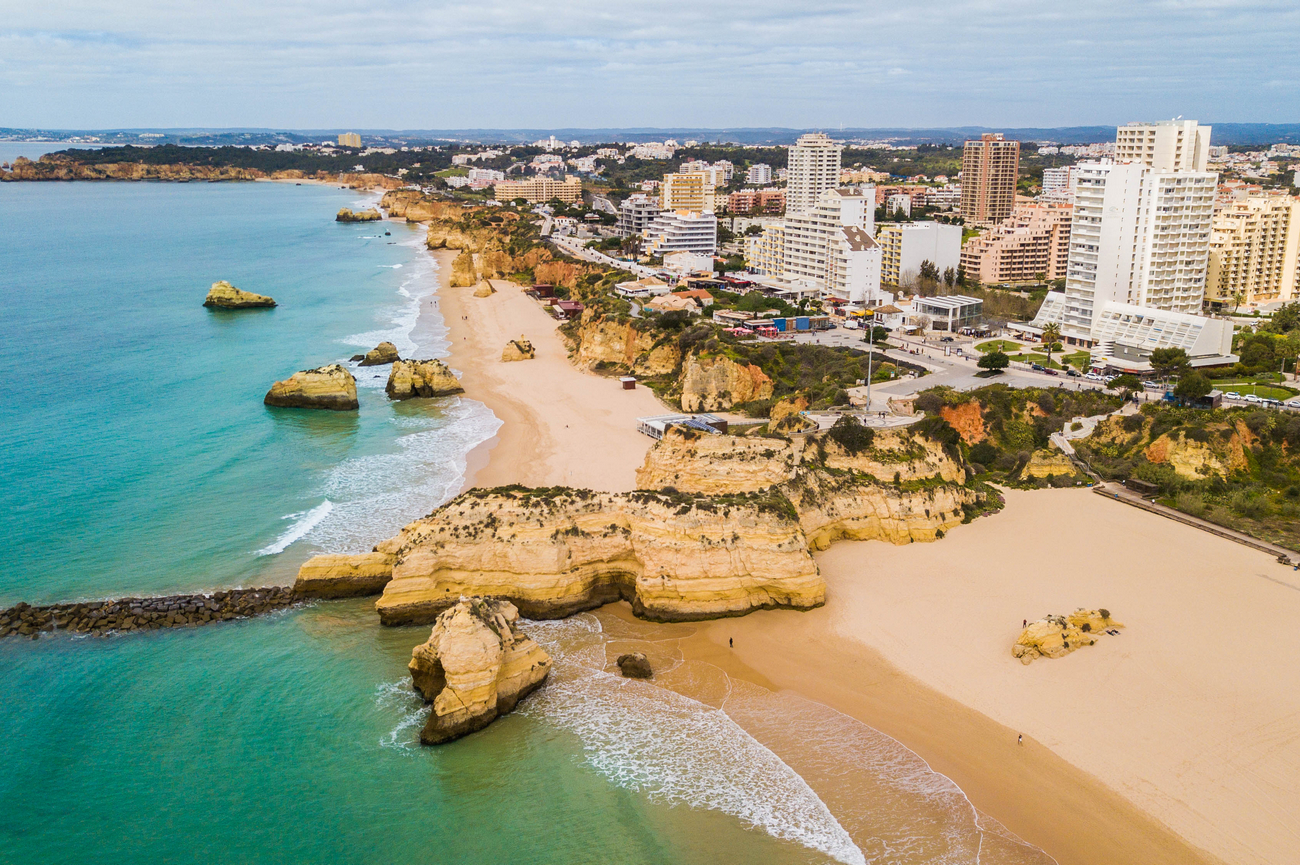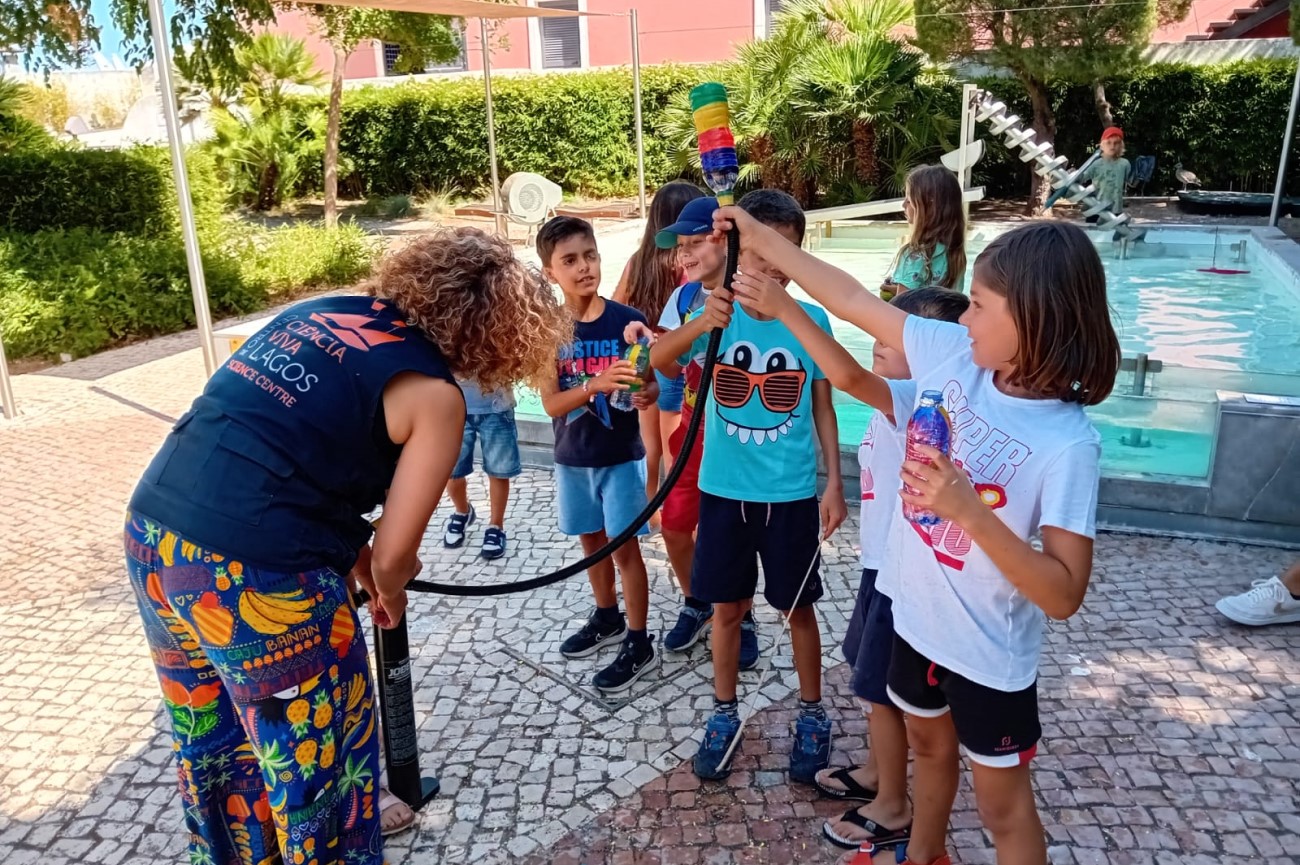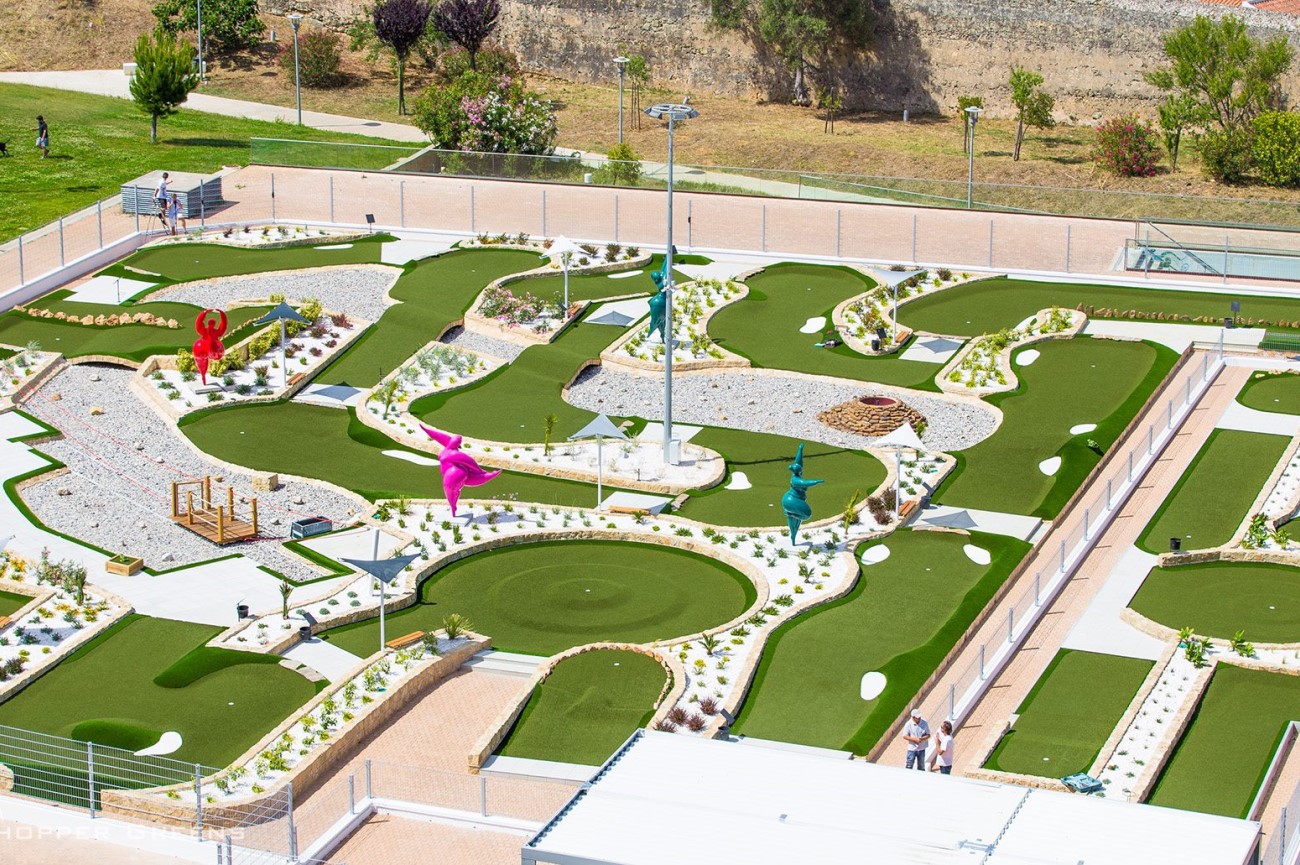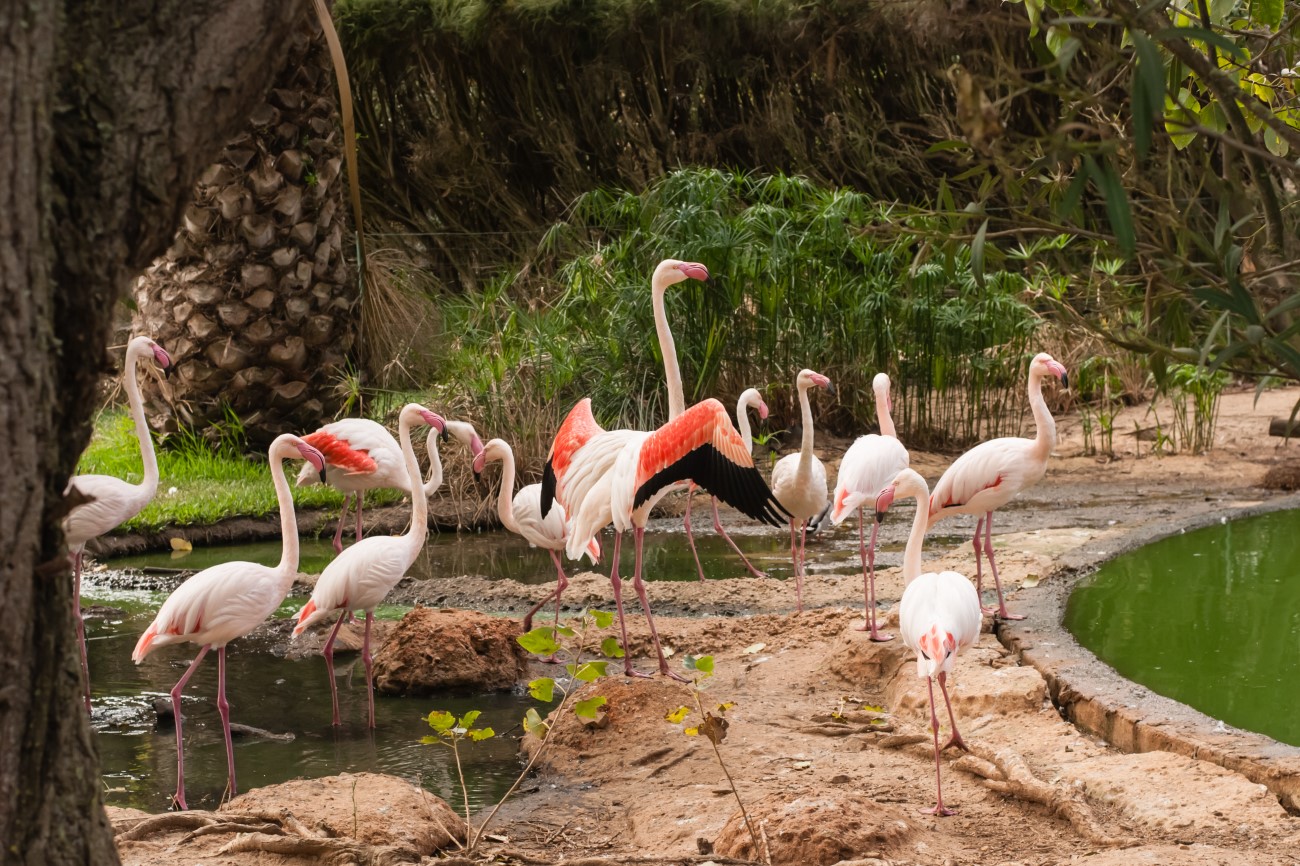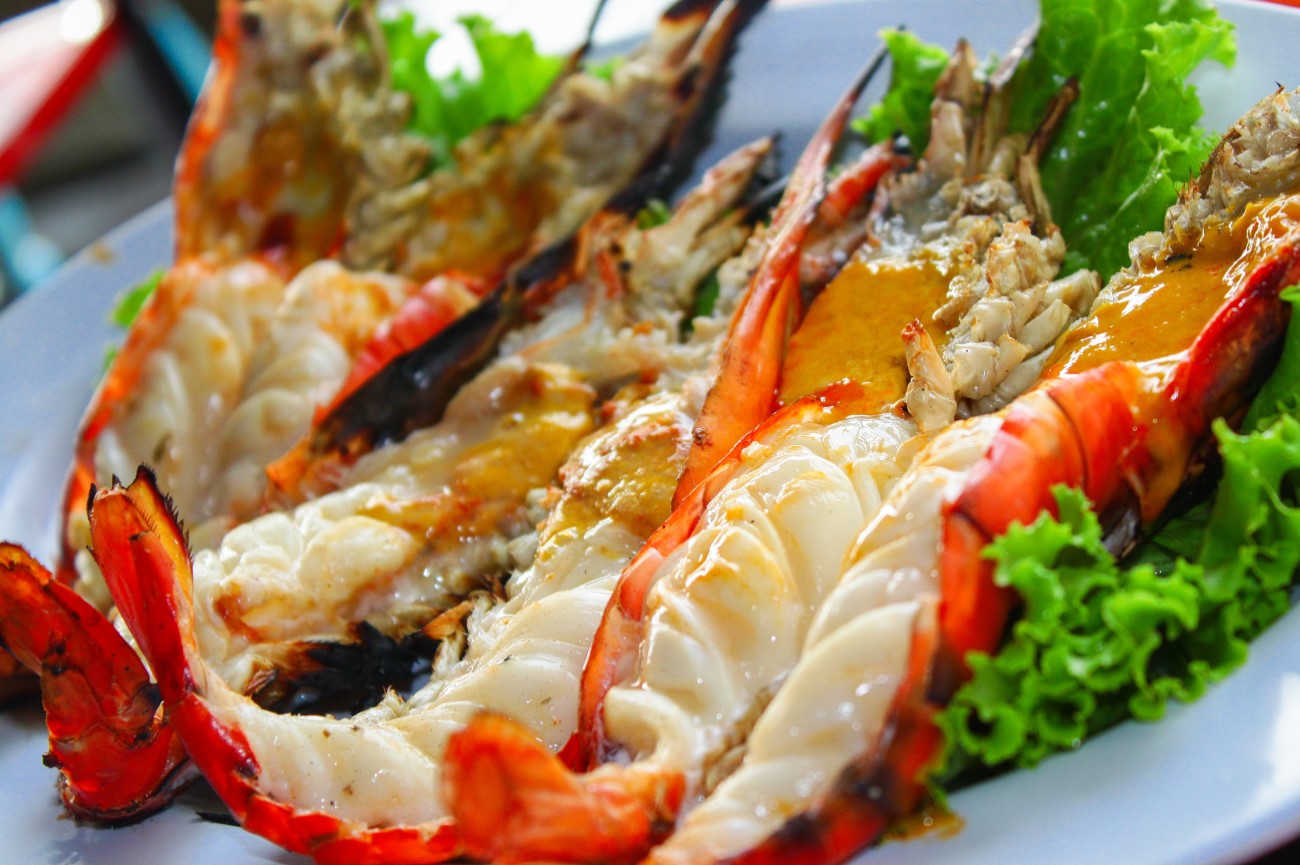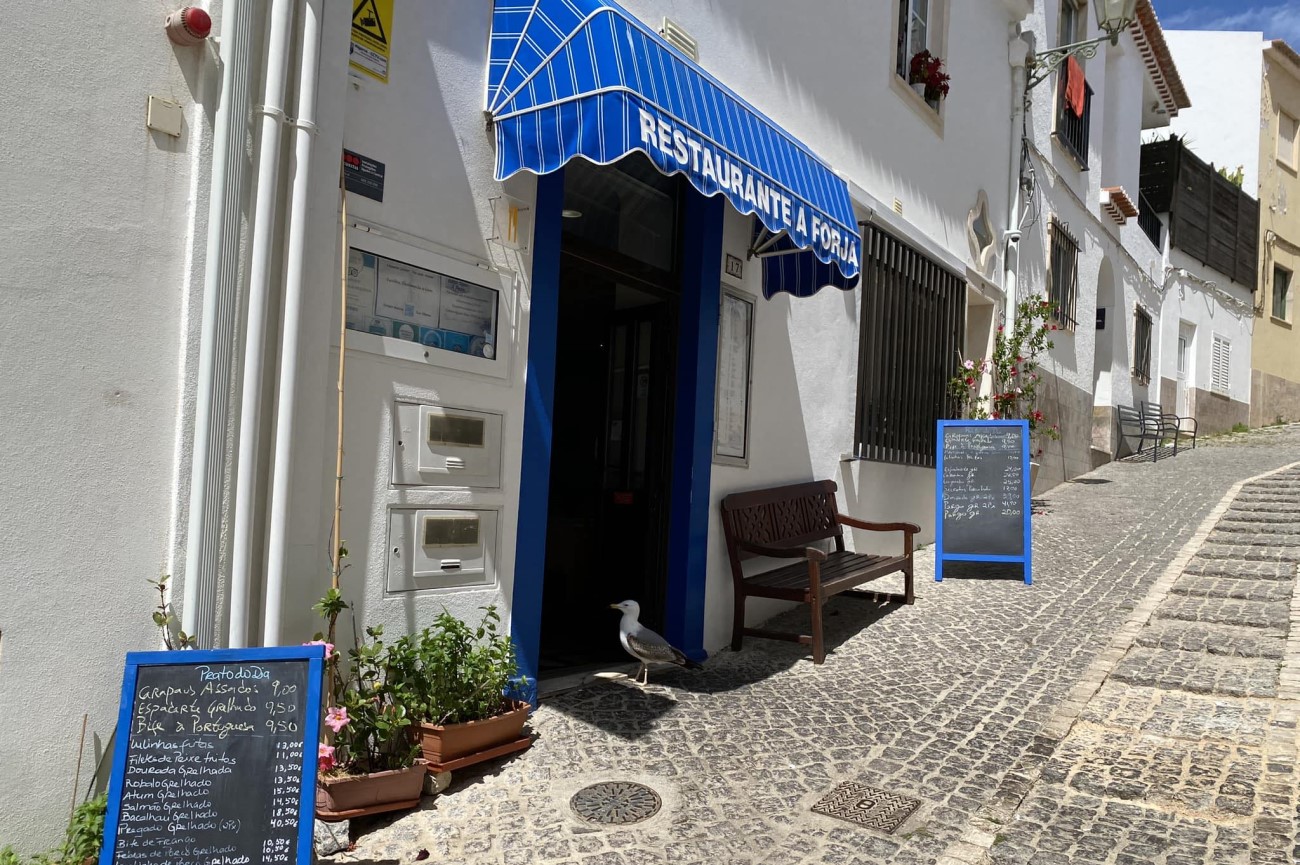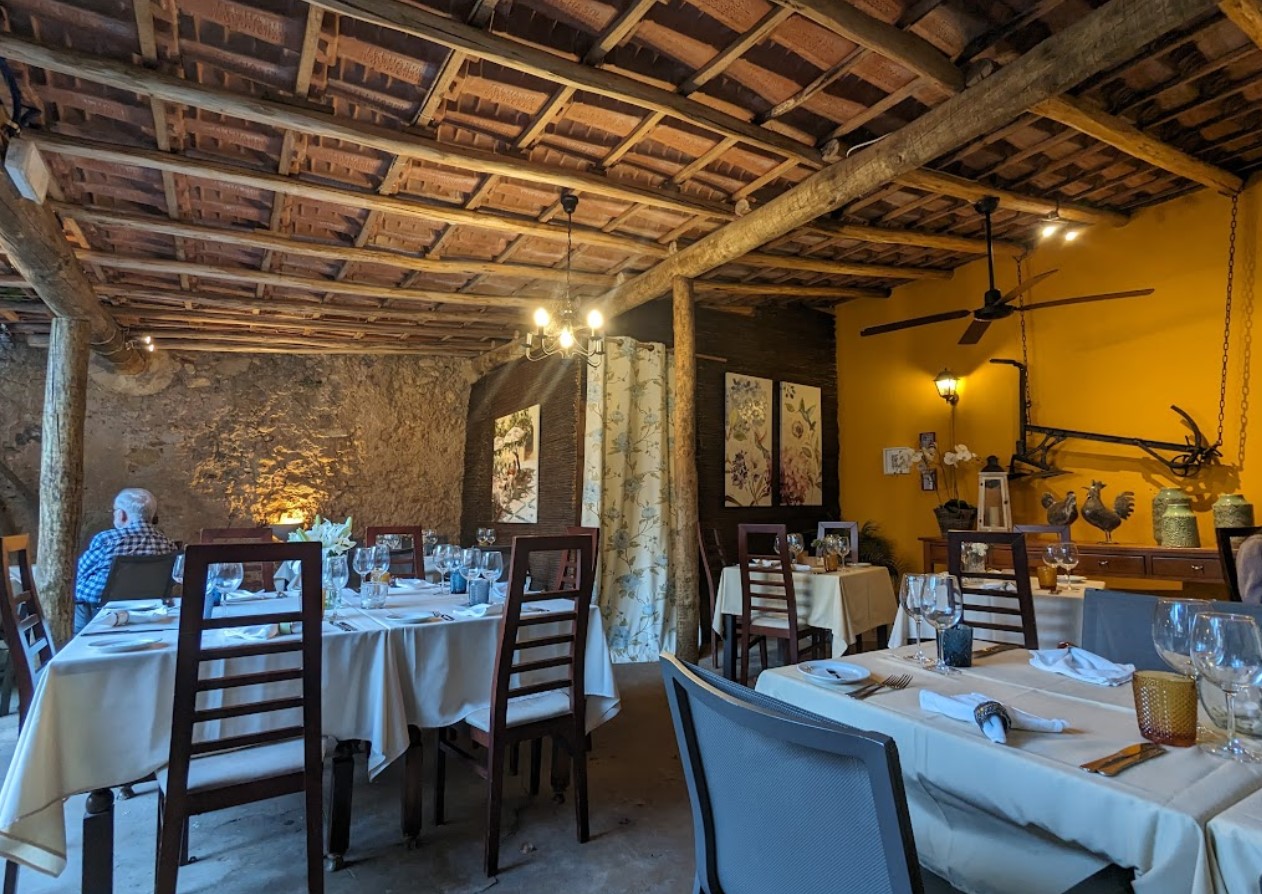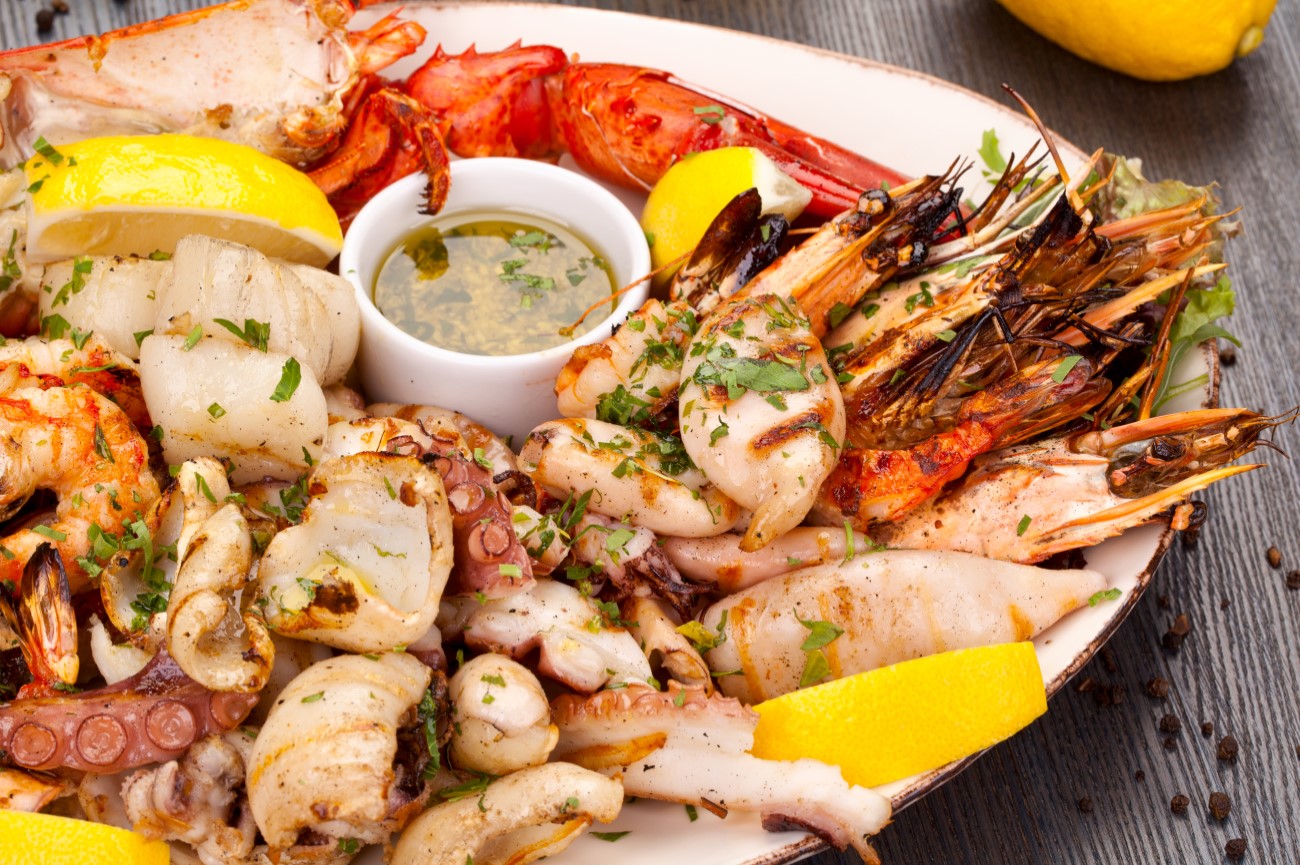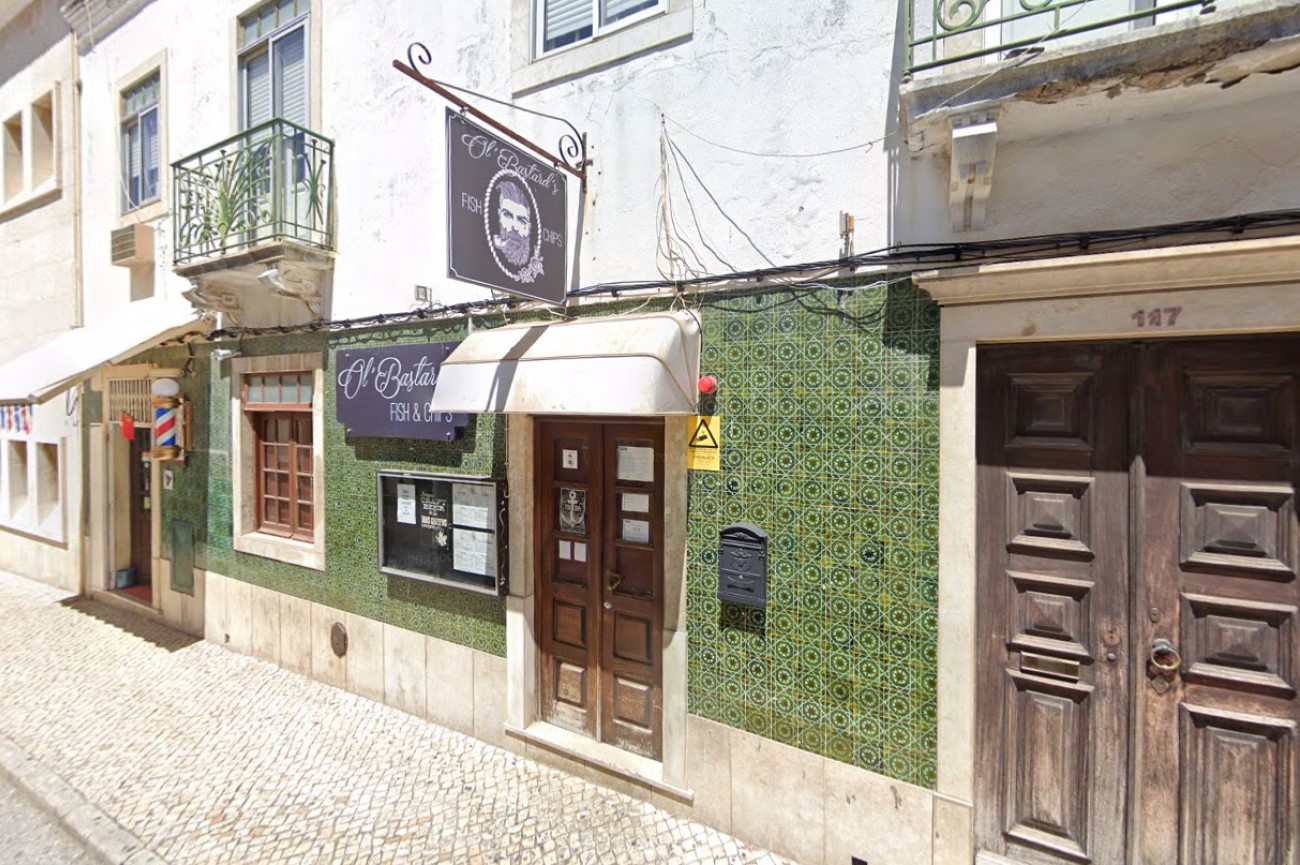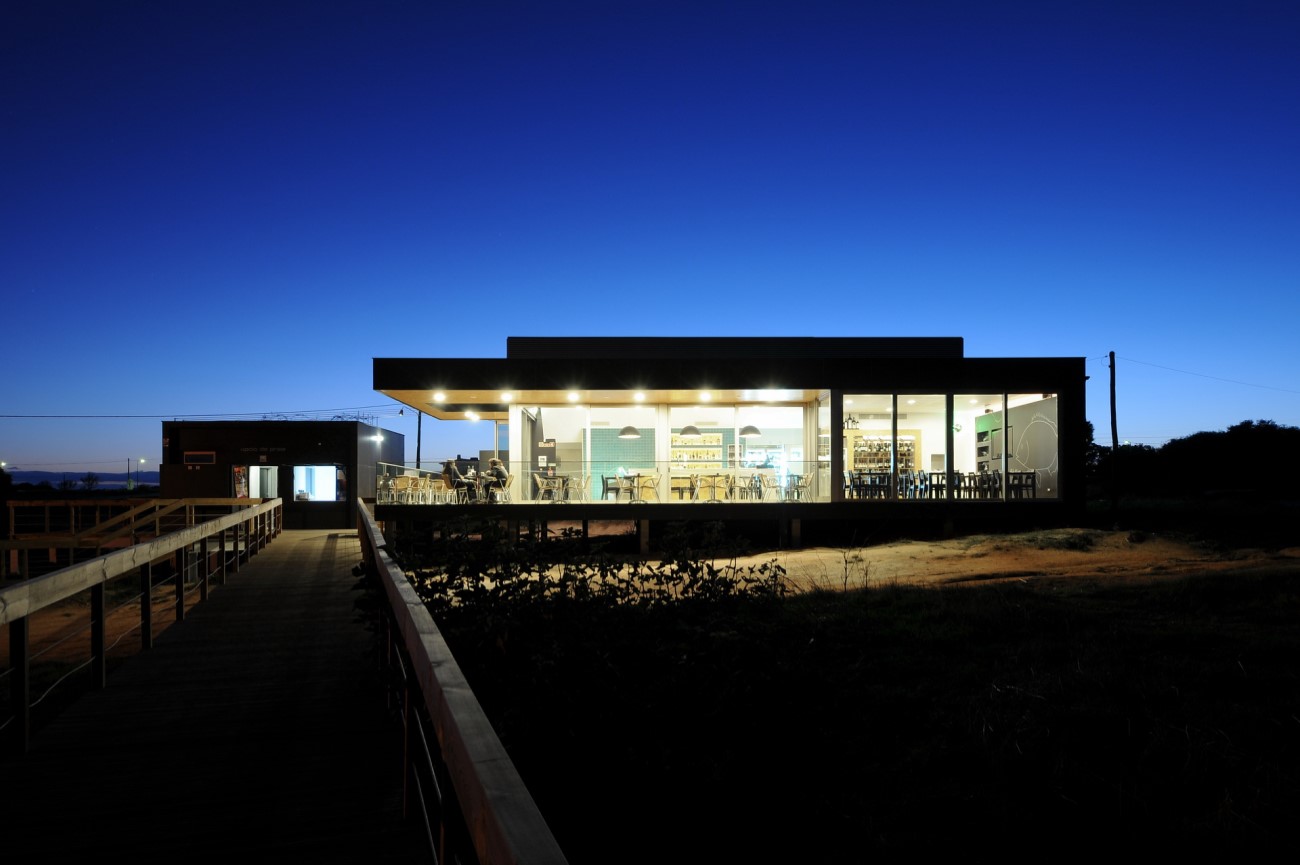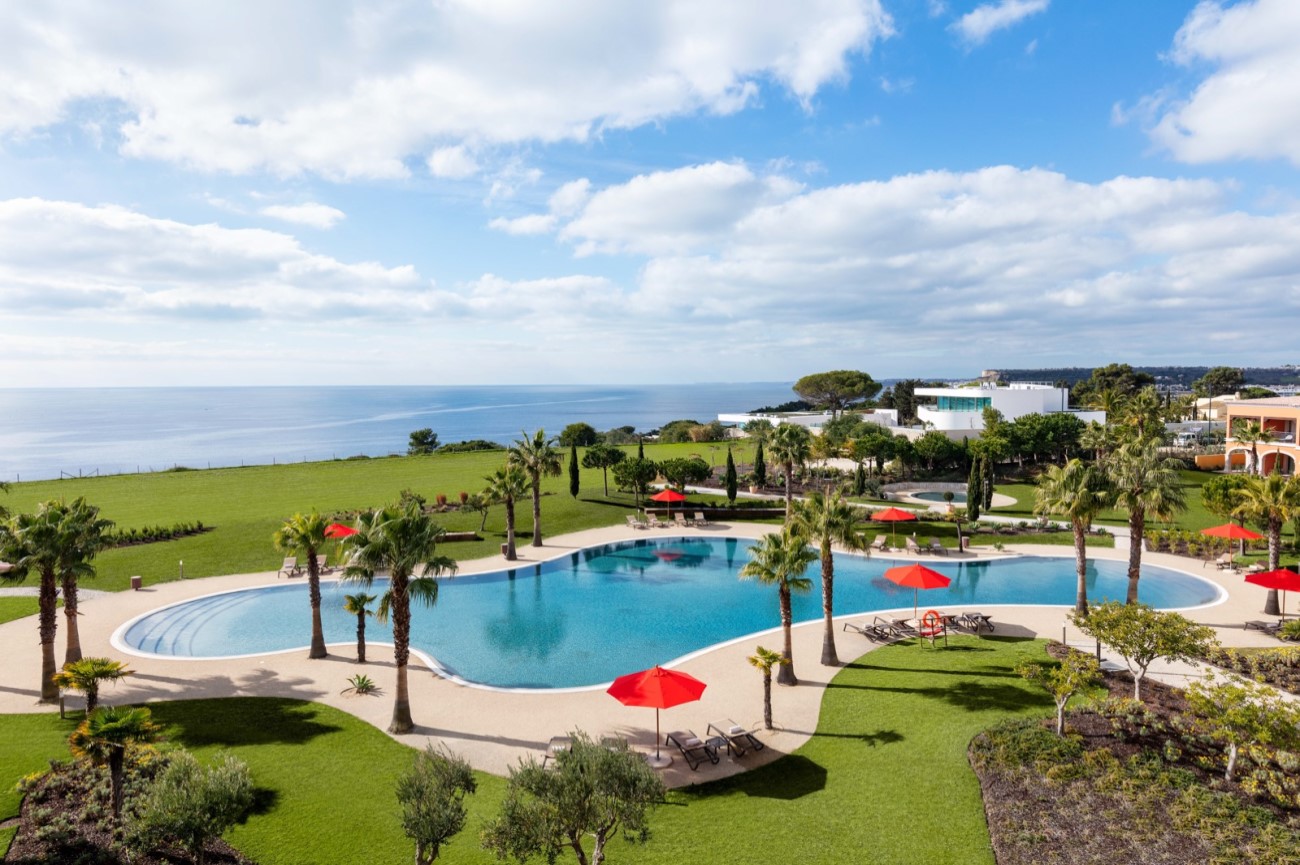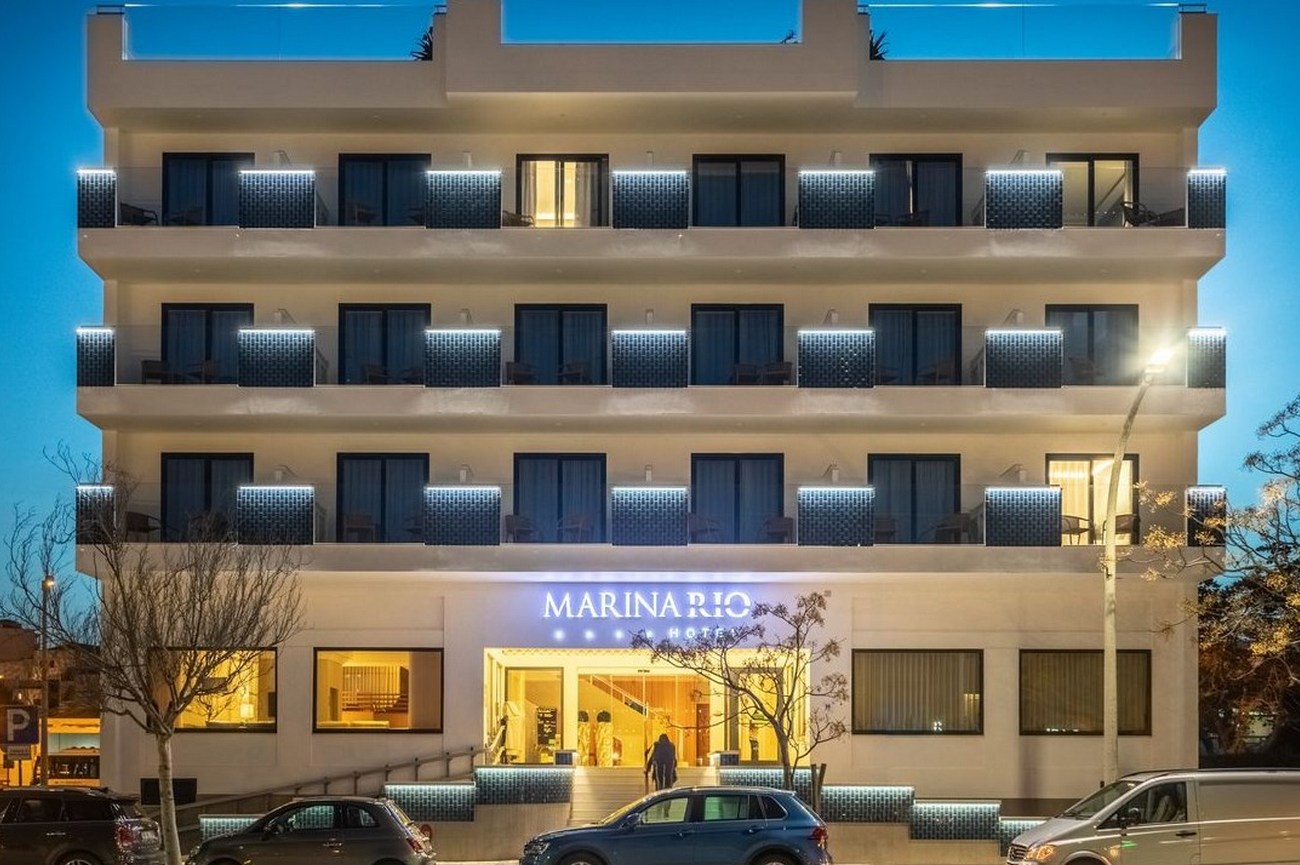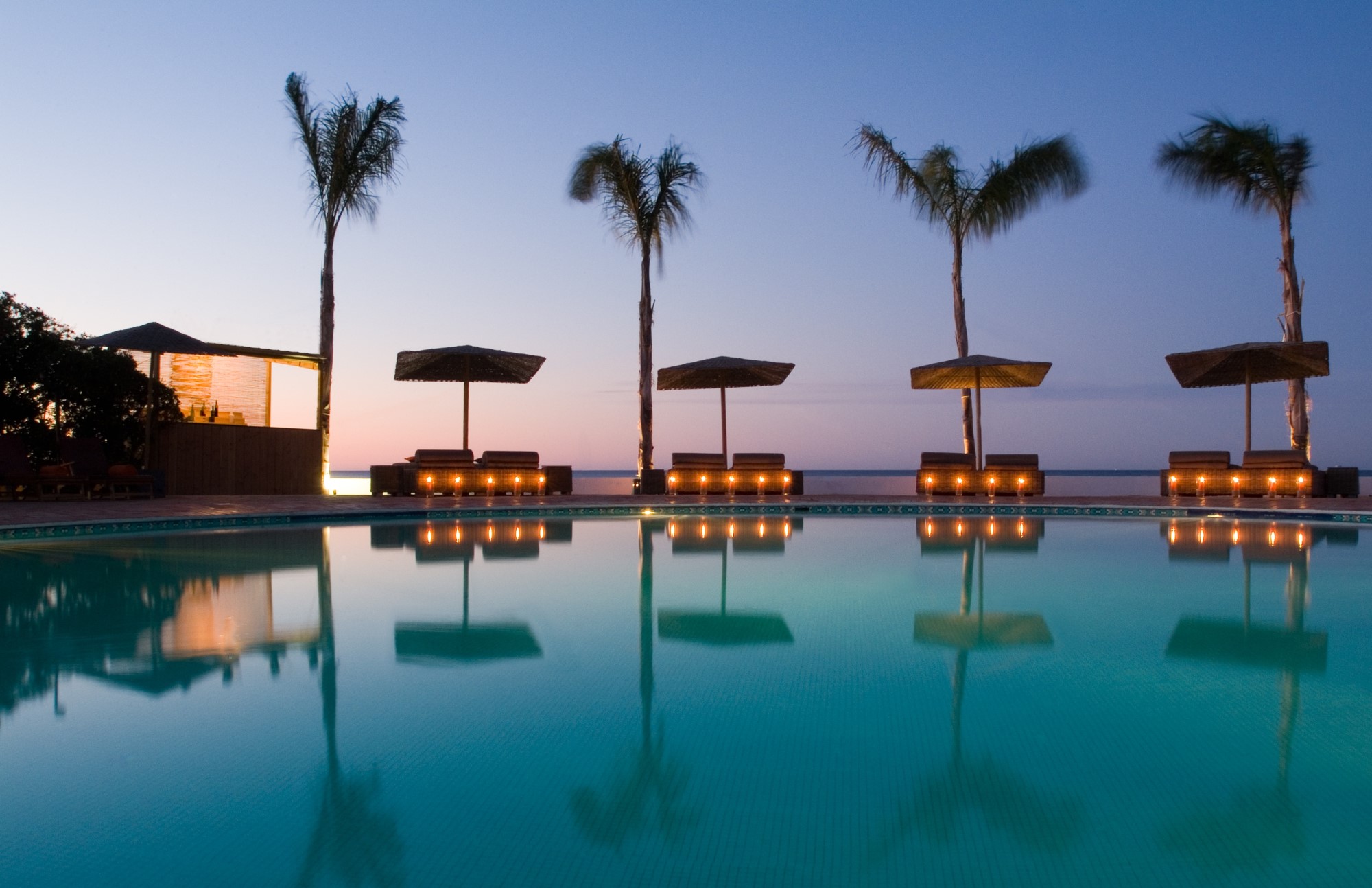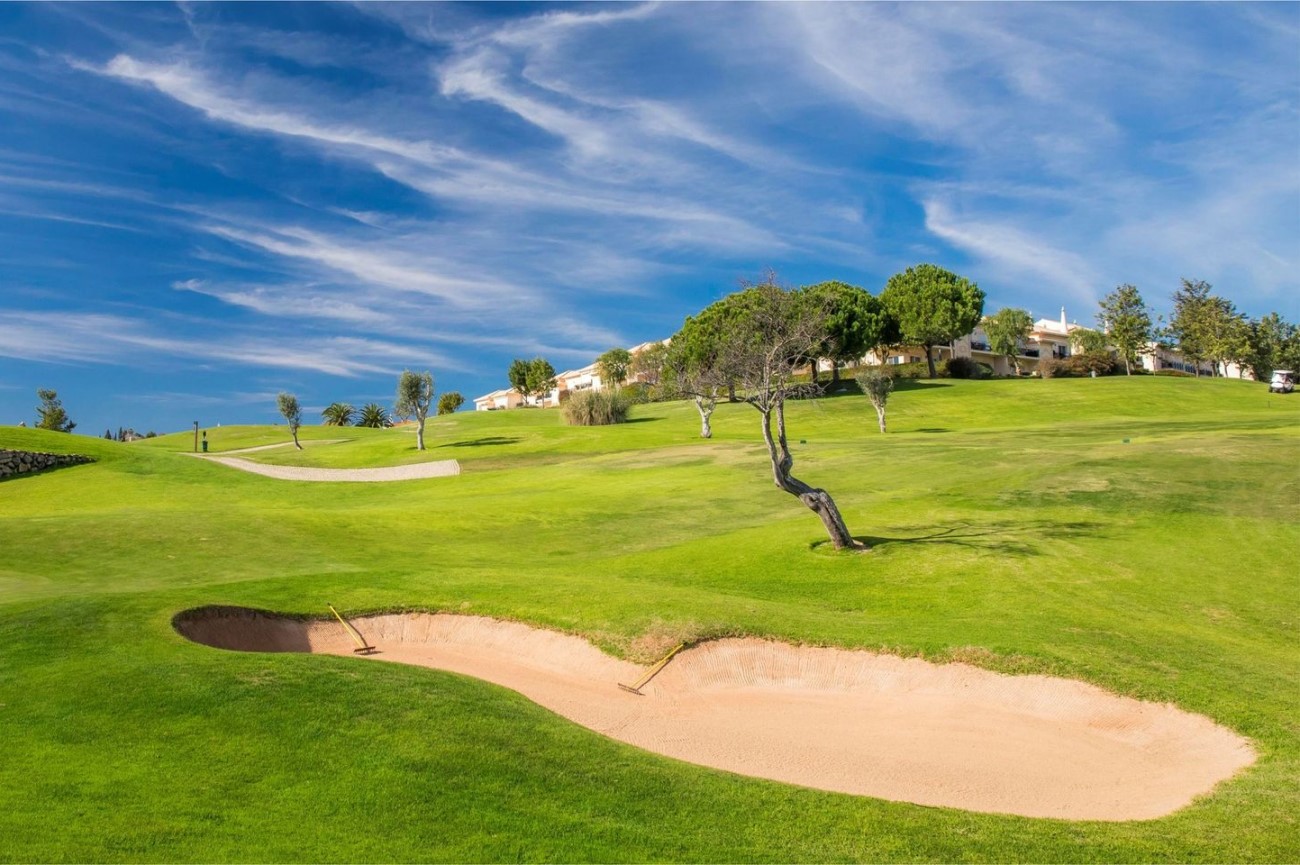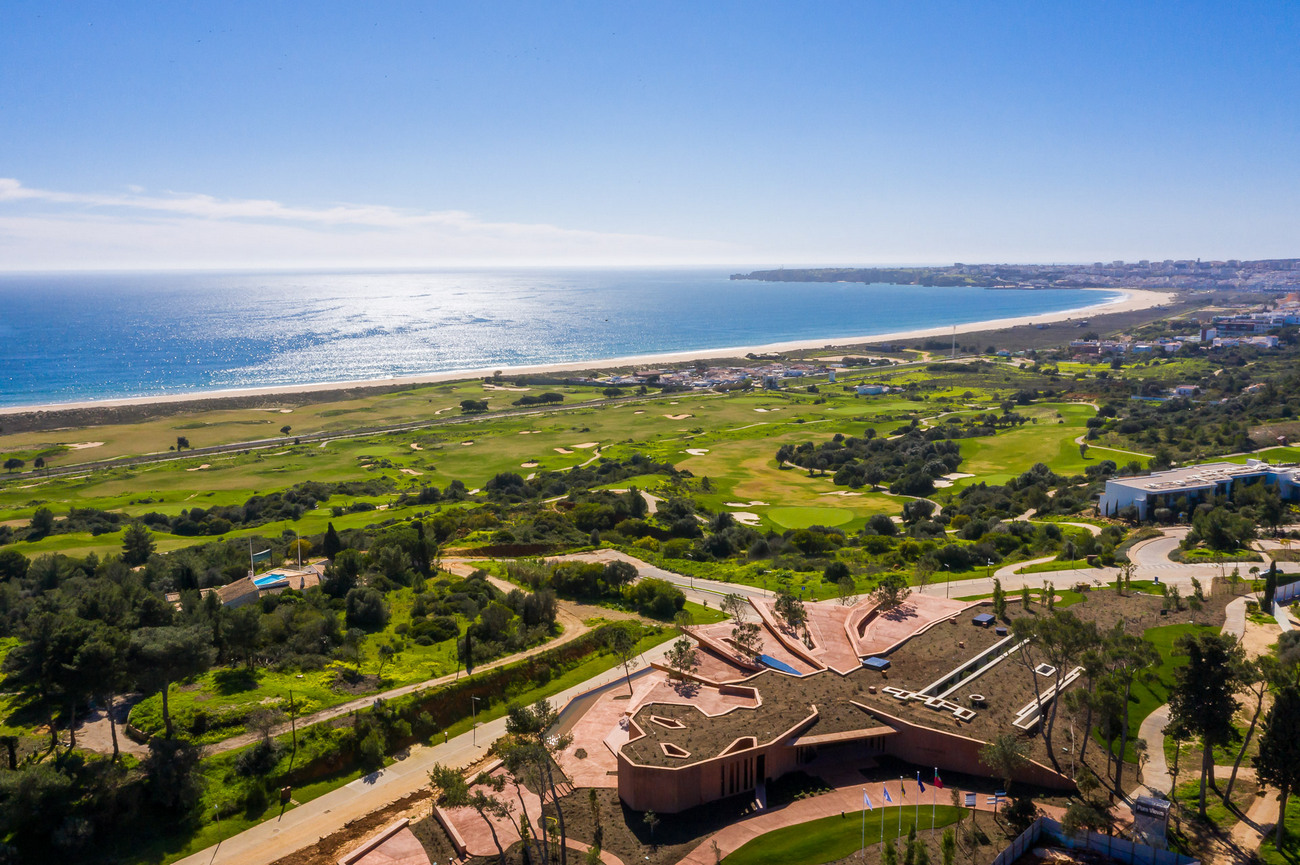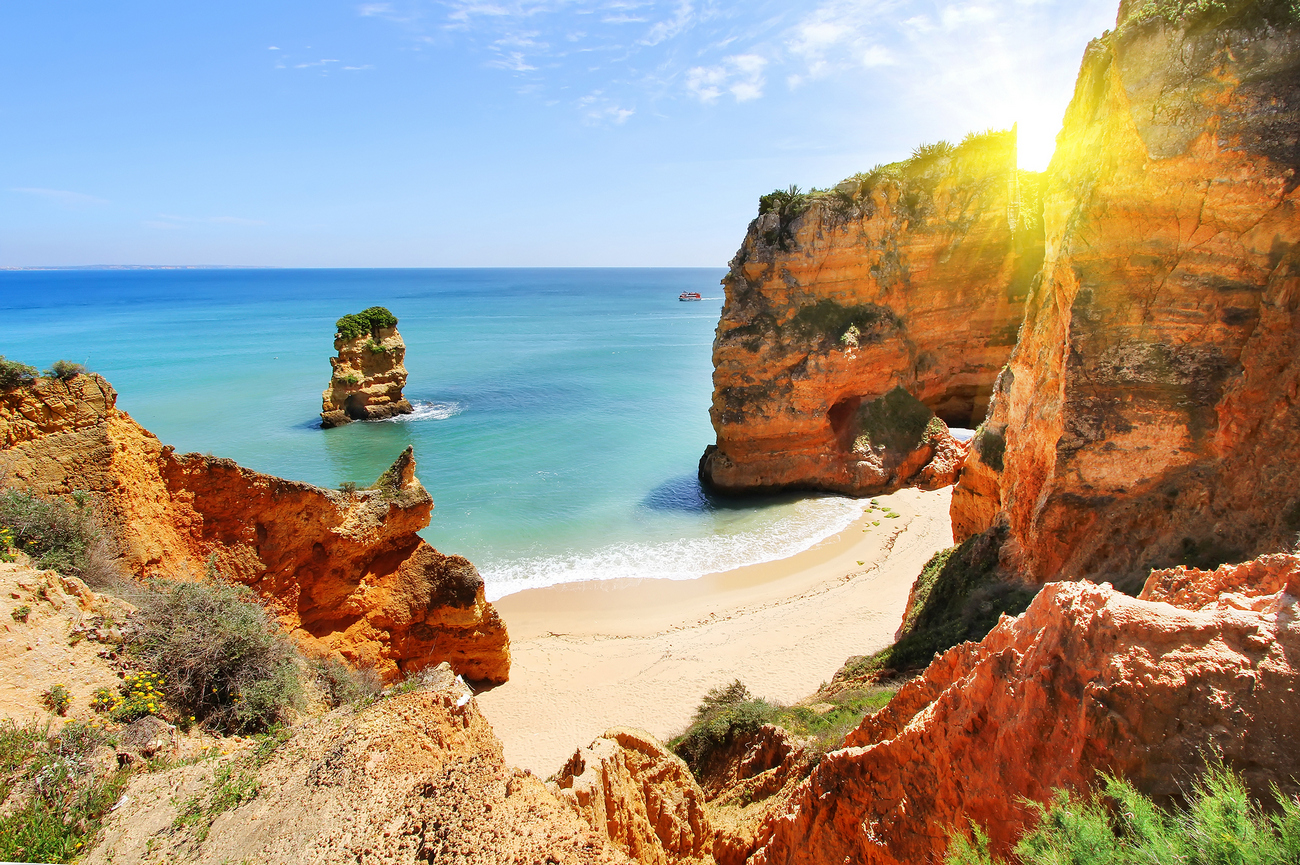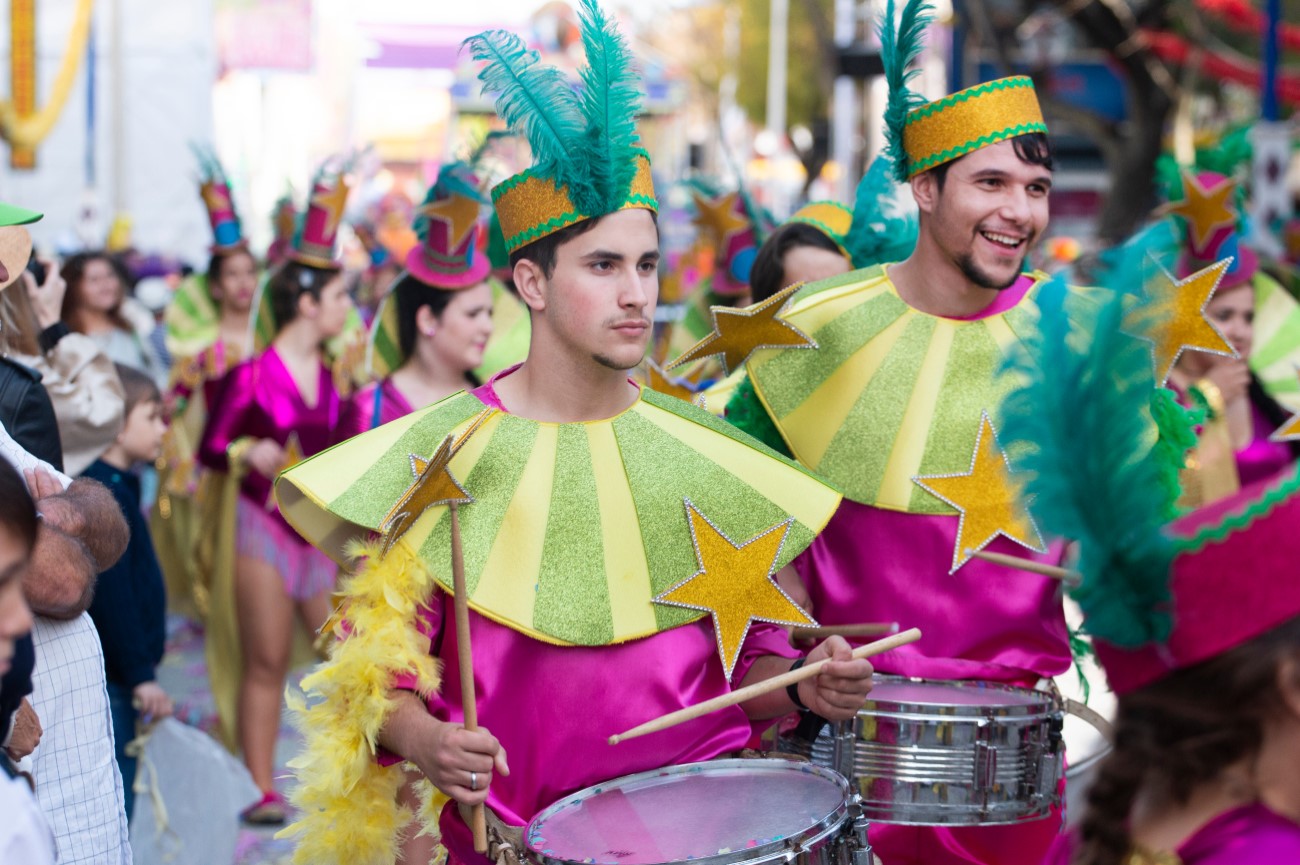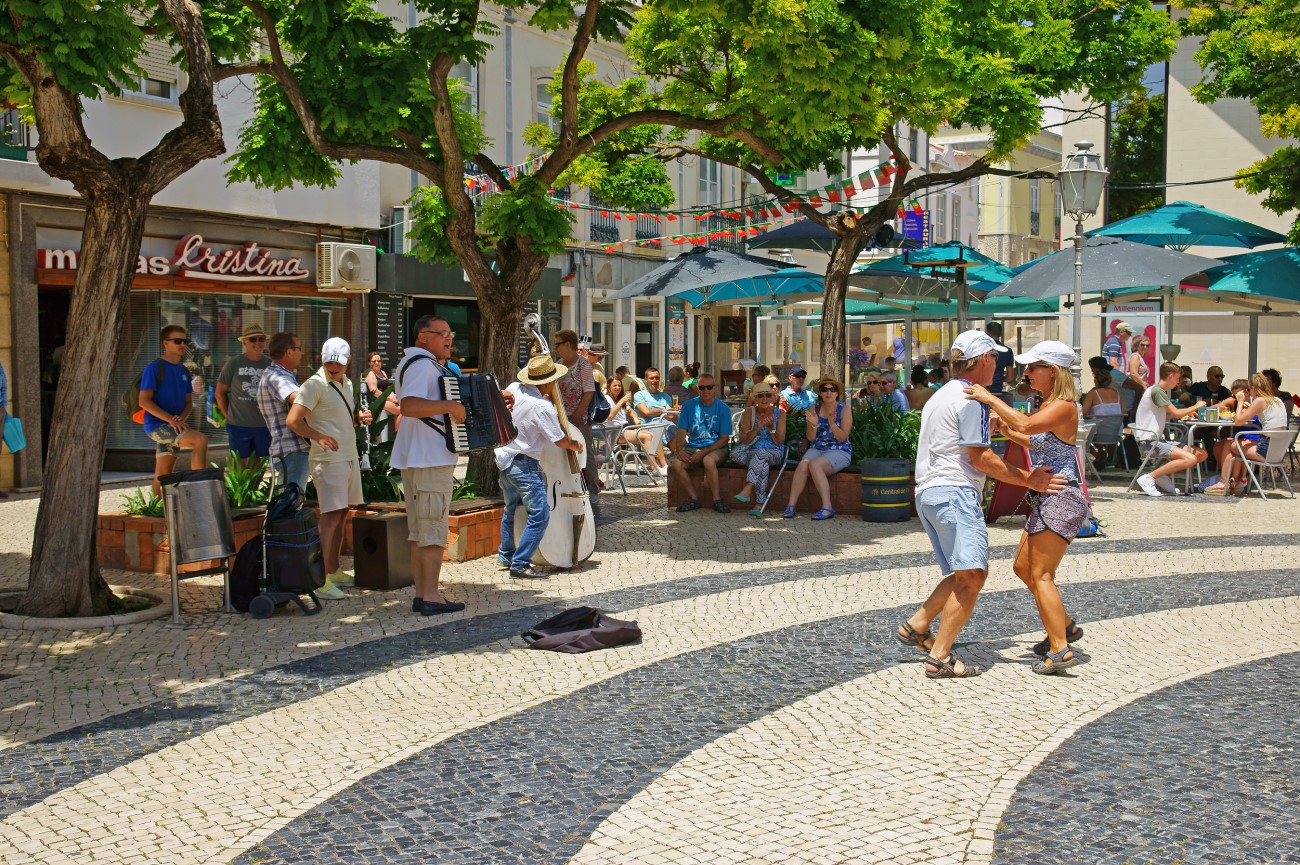Things to do in Lagos, 2-day Itinerary
In a sea of beaches, grottoes, and sandstone cliffs, stands Lagos, one of the most beautiful towns on the Algarve coastline. Around 22,000 people live in this seaside town, known for its magnificent rock formations, white sandy beaches and buzzing nightlife.
Formerly known as Lacobriga, Lagos has more than 2,000 years of history and was occupied by many civilisations throughout the centuries, including the Romans, the Visigoths, the Byzantines and the Moors, who renamed it to Zawaia, meaning lake or “lago” in Portuguese. Evidence of their presence can be seen in monuments like the medieval castle and the artefacts collection of the museums dotted across town.
Below we cover the best things to do in Lagos, from historical sights to outstanding beaches and boat tours.
Day 1

Morning: Old town
There’s plenty to capture in the centre of Lagos. Start the morning exploring the old town, lined with whitewashed houses, lively seafood restaurants and cobblestone streets.
Igreja de São Sebastião
Our first stop is the Igreja de São Sebastião. Built between the 14th and 15th centuries, this church sits just behind the municipal market. Inside is the Capela dos Ossos, a small bone chapel featuring a Joanine altarpiece.
Mercado Municipal de Lagos
Return to the main promenade, at Avenida dos Descobrimentos, to visit the municipal market. Inside is a range of food stalls selling fresh produce from all over the Algarve. The smell of fish lingers in the air as you get closer to the fishmongers’ section and their colourful display of raw fish and seafood. Be sure to climb up to the second floor and admire the view of the city and the bay ahead of you.
Mercado de Escravos
In the 15th century, Lagos played an important role in launching the Portuguese Age of Discovery. The town ended up becoming the centre of the European slave trade, as slaves were brought over from Portugal’s African colonies. This dark chapter is somewhat covered in the Slave Market Museum. The museum tells the story of the slavery period in Lagos, explaining how slaves were integrated into society and the evolution of Lagos as a trade centre.
Mar d’Estórias
A few steps from the museum is Mar d’Estórias, a multipurpose space that doubles as a restaurant, gallery, rooftop bar and gift shop. Housed inside a restored Renaissance church, it is the perfect spot to stock up on souvenirs. You’ll find anything from regional honey and olive oil to handmade baskets and ceramics.
Afternoon: Museu Municipal Dr. José Formosinho
Continue your tour at Lagos’ main museum, Museu Municipal Dr. José Formosinho. Here, you can learn more about the history of Lagos and discover a series of archaeological items ranging from the Neolithic to the Roman and Arab periods, as well as paintings from the 18th century and old Portuguese coins.
Igreja de Santo António
Attached to the museum is the Igreja de Santo António. From the outside, it seems like a modest church with its plain whitewashed façade, but as you walk through the doors, you’ll encounter extravagant decor with gilded woodcarving, tiles and a magnificent fresco ceiling. The surrounding paintings showcase the life of St.Anthony of Lisbon.
Jardim da Constituição
Take a moment to relax in this shady park facing the sea and the town’s medieval walls. Keep an eye out for the coat of arms of Lagos and the statue of Gil Eanes, a 15th-century Portuguese explorer.
Lagos Castle
Opposite the garden is what remains of Lagos Castle, also known as the Castle of the Governors. Once part of the old city walls, these days, all that remains is a set of towers that mark the entrance to the old town.
Forte da Ponta da Bandeira
Make your way to the waterfront, where you will spot the Forte da Ponta da Bandeira. This 17th-century fortress was erected to protect Lagos against pirate attacks and invaders, as it sits conveniently between the Bensafrim river stream and the sea. Inside is a small chapel covered in tiles from top to bottom. Starting at the edge of the fort is a long trail of white sandy beaches and sandstone cliffs.
Day 1 - Lagos Tour Map
Day 2

Morning: Boat tour
While in Lagos, it’s worth taking a boat tour across the coast. Most tours depart from the Lagos Marina. You can choose between dolphin-watching tours with marine biologists or set off to explore the nearby caves, like Benagil in Lagoa or the rock formations of Ponta da Piedade. These tours usually last around two hours. Before or after your trip, you can take a walk along the marina, which is packed with cafés and restaurants.
Afternoon: Lagos Beaches
Spend the afternoon exploring Lagos Beaches. Praia da Batata is the closest beach to the center, making it the perfect spot for a swim if you don’t have a car. A bit further south is the Praia Dona Ana. A wooden stairway takes you down to the beach framed by stunning yellow cliffs. The clear waters make it an ideal spot for snorkelling. Just a few minutes from here is the Praia do Camilo. This stunning cove is also reached via steps, (200 to be exact), but the trek is worth it. When the tide goes out, you can walk to the surrounding caves. These two are the most popular beaches in Lagos, so they tend to get busy in summer. Other alternatives include the Praia de Porto Mós, a sprawling beach beyond the Ponta da Piedade headland with plenty of parking and restaurants, or Meia Praia, which sits across the river. Backed by dunes, Meia Praia’s golden sands stretch for nearly six kilometres, reaching the Alvor Lagoon.
Ponta da Piedade
Before sunset, make your way to the jaw-dropping cliffs of Ponta da Piedade. Tucked away between the cliffs, is a maze of caves, grottoes, and arches and little fishing boats navigating through them. You can explore the area on foot or hop on a boat trip or a kayak tour.
Day 2 - Lagos Tour Map
Day trips from Lagos
- Sagres: About half and hour from Lagos is Sagres, the southwestern tip of the Algarve. This small town is mostly famous for its surf scene, but it does have a few historical landmarks, including the 15th-century Fortaleza de Sagres and the Cabo de São Vicente lighthouse, an ideal spot to watch the sunset.
- Silves: Silves was once the capital of the Algarve before Faro took over. Set along the Arade River, this small town is home to a medieval castle, a Gothic cathedral and a Roman bridge. It’s a 35-min drive east from Lagos.
- Aljezur: Head a few miles north, and you’ll reach Aljezur. This whitewashed village is known for its wild beaches, picturesque streets and historical landmarks like the medieval castle.
- Portimão: If you’re looking for a bit more action, take a short drive to Portimão. This bustling resort area is among the largest cities in the Algarve and is packed with shops, restaurants and entertainment options. There is no shortage of beaches here, but Praia da Rocha is the most popular one.
Top things to do with kids in Lagos
Lagos is a perfect destination for families, with plenty of activities and attractions for kids. You can spend days on end relaxing on its sandy beaches or exploring the surrounding caves on a boat trip, where you can spot dolphins too. In summer, a tourist train takes you from the centre to the beaches of Meia Praia and Dona Ana.
The old town is easy to explore on foot, and there are plenty of cafés where you can recharge and taste delicious pastries. You’ll find plenty of museums along the way, including the municipal museum covering the town’s history and the Centro de Ciência Viva, which offers fun interactive exhibits on science and technology. Another popular attraction is the Pro Putting Garden, a crazy-golf circuit near Praia da Batata.
About a 20-minute drive from the centre is the Lagos Zoo, home to over 100 animal species, including parrots, monkeys and wild cats. A bit further out is the Slide & Splash, a water park filled with slides and pools.
Where to eat in Lagos
The cuisine in Lagos includes loads of fresh fish and seafood. Among the specialities here are the poached mackerel, clams and stuffed squid. You’ll also find the traditional seafood stew, cataplana. Below are some of the best restaurants in Lagos where you can sample some of these local delicacies:
- Real Portuguese Cuisine: As the name suggests, this places serves real Portuguese cuisine. The menu features anything from lamb chops to grilled codfish and garlic shrimp.
- A Forja: Located in the centre of Lagos, this restaurant stands out with its blue door. The menu focuses on grilled fish, such as tuna, sardines and sea bass.
- No Pátio: Just a few minutes walk from Igreja de Santo António is this cosy restaurant with a patio. Highlights include the goat cheese with tomato chutney, pumpkin ravioli and grilled tuna.
- Marisqueira O Perceve: Seafood is the star of the show at this place located a few minutes from Lagos Marina. Here you can order anything from fresh prawns and mussels to lobster and crab. If you’re having trouble choosing, opt for the seafood platter, which includes a mix of several shellfish.
- Ol’Bastards: This cosy restaurant in the old town serves delicious fish and chip combos, loaded fries and tacos.
- Restaurante O Camilo: Set just above Praia do Camilo, this restaurant offers a great range of seafood, including octopus, clams and oysters. Book ahead for a seat by the window overlooking the sea.
Where to stay in Lagos
- Cascade Wellness Resort (5 stars): This cliff-side hotel offers breathtaking views of the Atlantic Ocean. There is a mix of rooms, apartments and villas, which can take up to eight people. Guests also have access to two restaurants, three bars, two swimming pools, a spa and sports courts.
- Hotel Marina Rio (4 stars): Facing the Lagos Marina, this hotel offers comfortable twin rooms with private balconies. Amenities include a spacious living room with TV, a small heated pool and a rooftop terrace.
- Tivoli Lagos (4 stars): This four-star hotel is conveniently located in the heart of Lagos, a few steps from the marina and the municipal market. It features 296 rooms, including options for families. Facilities include a restaurant, pool, gym and spa. During summer, they offer a free shuttle to the Duna Beach Club in Meia Praia.
Fancy a vacation rental instead of a hotel? Here is our selection of the best vacation rentals in Lagos.
Best golf courses near Lagos
There are several golf courses near Lagos. The closest one is the Boavista Golf & Spa Resort, an 18-hole golf course designed by Howard Swan. The course offers a few challenging holes, a practice area and a golf academy. A few miles from here is the Espiche Golf, an 18-hole course surrounded by native plants.
Also worth checking is the Palmares Golf, a 27-hole golf course designed by Robert Trent Jones Jr. and Morgado Golf, an 18-hole course set amidst a valley.
Best time to visit Lagos
Lagos offers a Mediterranean climate with mild winters and pretty hot summers. The peak season are the months of June to August, when temperatures reach up to 30ºC. It's the ideal season to hit the beach or take a boat tour along the caves. Plus, you’ll enjoy some of the city’s top events, like the traditional bath on the 29th of August. If you want to avoid the crowds, however, it’s worth visiting off-season in spring or early autumn. The temperatures are still pleasant enough for a walk, but there are fewer crowds around.
Lagos Festivals
- Lagos Carnival: This vibrant party usually takes place around February or March and includes colourful street parades.
- Banho 29: Banho 29 is a traditional event in Lagos that takes place on the 29th of August, celebrating the time when villagers went down from the hills to enjoy the start of summer. The day begins with picnics on the beach and a dip in the sea, usually at Praia da Batata, and ends with a fireworks display at midnight.
- Festa Nossa Senhora da Luz: Right after the Banho 29, Lagos celebrates this religious festival, honouring its patron saint. The event includes a procession, traditional food, and live music.


